#it's also a barrier to engaging with the characters whether or not the viewer knows what's going on
Explore tagged Tumblr posts
Text
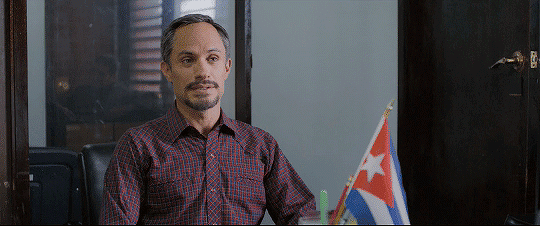
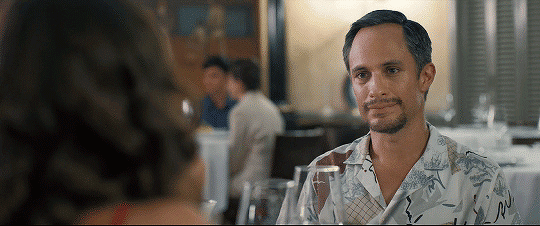
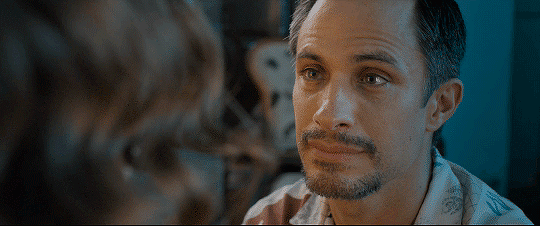
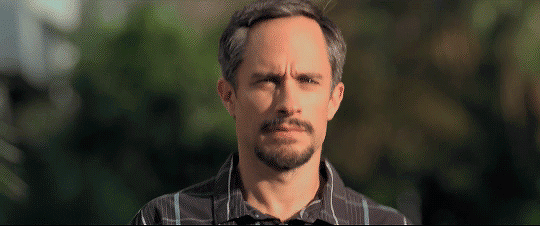
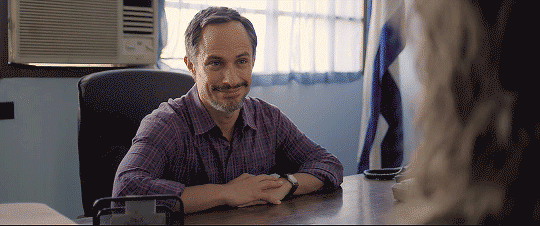
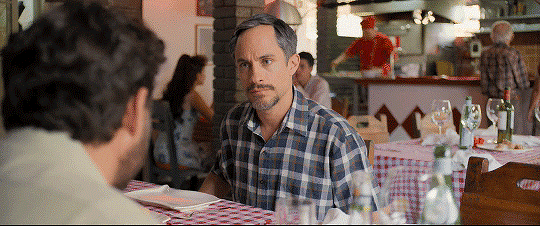
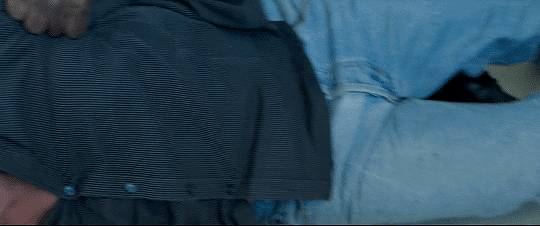
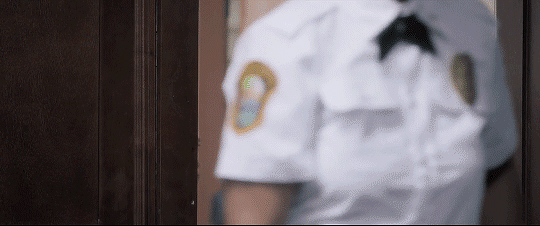
Gael García Bernal in Wasp Network (2019, dir. Olivier Assayas)
(Among other people, these gifs feature the backs of the heads of Anel Perdomo, Penélope Cruz and Edgar Ramírez)
Gifs are all 540px wide so you can click to see larger.
[other gael filmography gifsets]
#gael garcía bernal#wasp network#ggb filmography gifs#the real life story is fascinating#so i don't know how they made such a meh film out of it#especially given the quality of the cast#i think the problem is that they try to pull off an 'aha! but this is what was really going on' twist halfway through#which just doesn't work with a real life story that was headline news#it's also a barrier to engaging with the characters whether or not the viewer knows what's going on#just tell the story properly please#btw the real gerardo hernández was 25 at the time of the earliest events depicted in this film and 32 at the end#he was significantly younger than rené gonzález or juan pablo roque but the film makes him around the same age#i mean sure if you can cast gael in your movie always cast gael in your movie but it's still an odd choice#gael garcia bernal
11 notes
·
View notes
Text
Giving Them the Moment: How Our Flag Means Death and it's Portrayal of Black Men is the Most Important Thing on Television Right Now
Note: written April 20, 2022
Media is an incredibly distinct way of communicating. It has a wide reach, and each person has their own interpretation of what they see. That’s the beauty of the medium as a whole. However, there are often downsides, especially when it pertains to the West. In the US in particular, there is a trend within popular media to lean towards propagandization. Whether it’s the idea that communism and socialism are products of the ‘Evil East’ or the lingering effects of the Motion Picture Production Code - also known as the Hays Code, the media monopolies have a firm grasp on what we as a society watch and enjoy.
When you begin to play close attention to how the media portrays Black men, this becomes abundantly clear.
It is a rare thing when we see Black men whose characters aren’t portrayed as being the object nor the perpetrators of violence. In fact, only one mainstream popular show comes to mind: The Fresh Prince of Bel Air. But even then, the given circumstances of Fresh Prince revolve around Will’s escape from the violence of the ‘urban’ inner city. This vilification of Black men dates back to the 1910s with D. W. Griffith’s Birth of a Nation, and continued into the 1930s, where Black people were often personified as the monsters, representing the ‘exciticism’ of the world beyond the West. It is the ‘exoticism’ that has played a huge part in the dehumanization of Black men as a whole. But as a Black Queer person watching Our Flag Means Death, it is breaking that mold in an incredibly important way.
The Black men in the show are allowed to have fun.
This show is breaking barriers left and right. Of the major recurring cast of 15, over half of them are people of color. It’s overt and unflinching portrayal of Queerness when so many of its older viewers - myself included - have lived through the Bury Your Gays and Dead Lesbians tropes time and time again is overwhelmingly refreshing. Nearly all characters are Queer until proven straight and represent all parts under the umbrella, including Leslie Jones’ polyamorous pirate queen and Vico Ortiz - a non-binary actor - playing a non-binary character.
But in a world where the narratives of Black men are so often framed around violence and brutality, the Black crewmates of the Queen Anne’s Revenge - Frenchie, Oluwande, and Roach - are allowed to be funny and vulnerable. Each one of them is starkly different from the other with identifiable characteristics that allow the audience to humanize them. The trio quickly became my favorites among the crew, with Roach being the stand-out amongst them. Samba Schutte’s often deadpan delivery never fails to draw a laugh from me, in particular the assertion that “meat is meat”. Frenchie, played by Joel Fry, is the quickest on the draw where his intellect is concerned, being posited in the show’s fifth episode as having had a hand in inventing the pyramid scheme while spouting the wildest of conspiracy theories and being afraid of cats (they’re witches, they steal your breath, and have knives in their feet, you know). The softness and constant vulnerability of Samson Kayo’s Oluwande may be one of the most important aspects of the show, as it establishes him as a reliable and trustworthy confidante to not just Jim, but to Rhys Darby’s Stede Bonnet as well.
They exist in their own separate spheres on the ship, going about their own separate business completely unbothered. While it is implied they lead violent lives as pirates, this violence isn’t used to define them as characters. In fact, Oluwande stated that both he and Jim engaged in piracy because they “had no choice”. The brief mention we get of Frenchie’s backstory implies that he lives a life of servitude, though whether that was as an enslaved person or a freed Black domestic worker is not mentioned. While there is little known about Roach so far, it is implied that his culinary skills are far beyond the levels of what is needed aboard a pirate ship.
The friendships and relationships they form within the crew aren’t built on violence either, but on open and honest communication. Most notably, the friendship of Frenchie and Wee John Feeny, played by Kristian Nairn. Fry and Nairn are an impeccable comic duo when their characters become ‘room people’, and the scene where they begin to design their new space is a personal highlight of the episode. Oluwande and Jim’s romance - played to perfection by Kayo and Ortiz - is one that revolves around both characters being almost devastatingly open with each other. Both actors play the emotional vulnerability of the characters well, and it is important to emphasize that it is Kayo’s Oluwande that moves to meet Jim where they are.
While the show allows all its men to show varying levels of emotional vulnerability - an exception being offered to the emotionally constipated Izzy Hands, played by Con O’Neill - there is something so special about seeing that luxury afforded to Black men. This show has, in just ten episodes, has become a game changer for the television industry. It has proved that a show with explicitly Queer characters can become a massive sleeper hit, and that sometimes the best kind of historical show is one that is historical fiction. But it has also proved that you can create a narrative with Black men that doesn’t include their stories being framed in violence or brutality, that they can be funny, charming, witty, vulnerable, intelligent, complex characters with their own narratives that serve a purpose outside of a device of exoticism. It is this rare thing that makes these characters, and indeed the show as a whole, so important to its viewers.
We deserve more vulnerability, more humor, and more humanizing content from these three men, and this show is one that is truly deserving of a glorious second season.
Sources:
Donaldson, Leigh. “When the media misrepresents Black men, the effects are felt in the real world.”
https://www.theguardian.com/commentisfree/2015/aug/12/media-misrepresents-black-men-effects-felt-real-world.
Kumah-Abiwu, Felix. “Media Gatekeeping and Portrayal of Black Men in America.”
Opportunity Agenda. “Media Portrayals and Black Male Outcomes.”
https://www.opportunityagenda.org/explore/resources-publications/media-representation-impact-black-men/media-portrayals.
Our Flag Means Death, (2022-). HBO Max.
#not horror but its relevant#our flag means death#ofmd#ofmd s2#roach#frenchie#oluwande boodhari#david jenkins#black men in media#let black men be silly in things!!!!!!#our flag means death season 2
377 notes
·
View notes
Text
Ultimate Guide to Watching Popular Western Series Dubbed in Thai
Have you ever found yourself scrolling endlessly through a streaming platform, looking for that perfect next watch? Imagine finding your favorite Western TV series all lined up with Thai dubbing, making every scene more relatable and every joke a little funnier. Whether you're a die-hard fan of action-packed adventures or the touching dramas, there's a whole world of content waiting to be explored. With this guide, you’ll discover how to dive into these international hits with ease on your favorite website.

1. Why Watch Dubbed Series?
Dubbed series offer a seamless entertainment experience, breaking language barriers and making the shows accessible and enjoyable for Thai audiences. Imagine watching your favorite superhero battles or dramatic scenes in your own language—doesn't that sound like a treat?
2. Benefits of Thai Dubbing
Thai dubbing adds a layer of comfort as viewers can connect more deeply with the characters and plot without struggling with subtitles. It’s like having a conversation in your own backyard—familiar and engaging.
3. Top Western Series Available in Thai
From thrillers like "Stranger Things" to the mystical realms of "Game of Thrones", leading streaming websites have started offering these popular series with Thai dubbing. There’s something magical about hearing Tyrion Lannister’s witty banter in Thai!
4. How to Access These Series
Most major streaming platforms now feature a Thai language option for many Western series. Simply navigate to the language settings on your chosen website and select Thai to start enjoying immediately.
5. Best Genres to Watch Dubbed
Action, comedy, and drama translate wonderfully into Thai. The high-energy, the laughs, and the tears resonate more when heard in your native tongue.
6. Kid-Friendly Series in Thai
Children can now enjoy shows like "Paw Patrol" and "Peppa Pig" in Thai, making their viewing experience both entertaining and educational as they listen to content in their primary language.
7. Subtitles vs. Dubbing: Which is Better?
While subtitles are great for language learners, dubbing can be more enjoyable for those who prefer focusing solely on the action without reading subtitles. It’s like choosing between reading a book and listening to an audiobook—both have their charms.
8. Enhancing Your Viewing Experience
Invest in a good sound system to fully appreciate the quality of voice acting in the Thai dubs. High-quality audio makes a big difference!
9. Must-Watch Dubbed Series of the Year
Don’t miss out on "The Witcher" and "The Mandalorian", both available in Thai. These series offer fantastic visuals and storytelling that are now more accessible.
10. Cultural Nuances in Translation
Translators work hard to retain the original sentiments of the dialogues while making them resonate with Thai culture, a subtle yet impressive feat!
11. Recommended Website Features for Optimal Viewing
Look for platforms that offer adjustable audio settings and a wide selection of dubbed content. Some sites also provide user-friendly interfaces that make navigating through different language options a breeze.
12. Viewer Reviews and Community Feedback
Join forums and read reviews to see how other viewers have experienced the dubbed versions. It’s a great way to find out which series have the best Thai dubbing.
13. Upcoming Dubbed Series to Anticipate
Stay tuned for upcoming releases like the new seasons of "Westworld" and "Barry", which are expected to be available in Thai soon.
14. Tips for Non-Thai Speakers Watching Dubbed Content
If you’re learning Thai, watching dubbed series can be a fun way to practice listening skills and improve language comprehension.
15. Conclusion: Start Your Dubbed Series Adventure
Now that you know how to find and enjoy Western series dubbed in Thai, it’s time to start watching. Visit your preferred streaming website, choose your series, sit back, and enjoy a world of stories told in your language. Happy watching!
Embark on a seamless entertainment journey with Thai-dubbed Western series. Your next favorite show is just a website click away
0 notes
Note
You said in one post that the author of Solar Lunacy is ableist. Could you explain how they're being problematic? I know almost nothing about them or the story itself, so I wouldn't know if they've said or done anything sus. Also, thank you for actually criticizing the Daycare Attendant stans, almost nobody in this site does that.
thank you for asking! it's rare to see, you're right, but it's also rare that people are willing to actually engage with that critical posting, so -- again, thank you! as for your question: oh boy, can i!
first: the basics. dissociation is a psychological response to overwhelming stress wherein the brain... disassociates from itself, placing a barrier between itself and the harsh reality. the most famous dissociative disorder is dissociative identity disorder (DID), known formerly as multiple personality disorder (MPD) or split personality. did occurs when someone without a fully-formed identity (read: a child) undergoes such severe stress that the 'brain' dissociates from its identity itself, creating alternate identities (personalities) to deal with the things they can't. these alternate identities work together to form a system. it's way more complicated than that and you can read more on it here and here but that's the bare minimum for the ignorant in the audience. we all caught up? good! moving on.
now, the question of whether or not the daycare attendant is a system is a touchy one. i've seen multiple different stances on the matter, seen a lot of arguments, and typed (and deleted) several hundreds of words about it, and the answer that i've come to is that, for the sake of this argument, whether the dca is a system in canon doesn't matter. what matters is how bamsara treats them. how do they handle the characters, how do they frame the switches in personality, the confusion, all the parallels to real-world symptoms -- how do they expect the viewer to feel, what do they pull from the cultural lexicon, yadda yadda. does bamsara -- regardless of their intentions -- depict the dca as a system, and if so, how do they handle it?
the answer is that they depict the dca as experiencing altered identity states, switching (and even blurring) between identities, and even repeatedly acknowledges them as a plural entity.
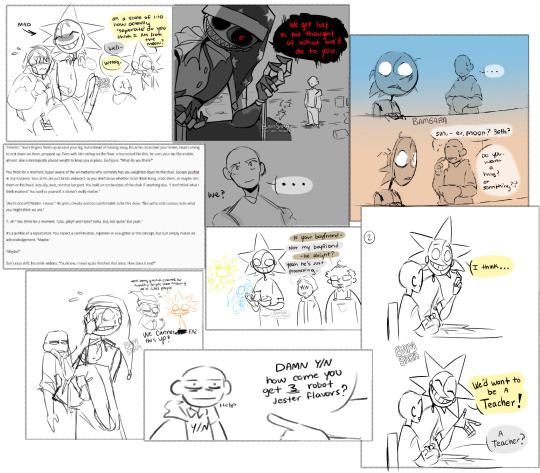

and it is these behaviours, specifically, that are used to make the dca scary. bamsara's daycare attendant is scary because they experience altered identity states. because they blur identities. because they are a plural entity. because they display the textbook symptoms and behaviours of a disorder most commonly caused by childhood sexual abuse. and it is the fear that this is inspires that makes them (but especially moon & eclipse) sexy.
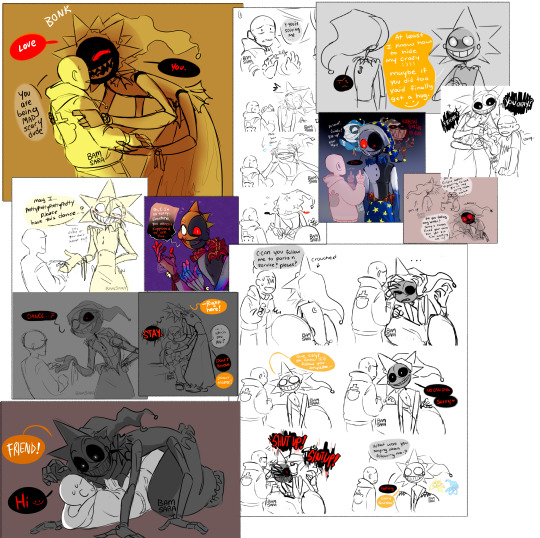
now, one can argue that this is simply in line with existing horror media, and they would be correct: most pop culture depictions of dissociative disorders are extremely ableist, and have real-world consequences! but what makes it really, really shitty is that... i don't want to think about this stuff. i don't come to fandom to be reminded that people are terrified of what they don't understand, and that that very very often includes the mentally ill. i don't want to be reminded that there are people who don't believe dissociative disorders exist at all. i don't want to reminded that they -- the sick, the survivors, the unlucky 140 million -- are spoken of in the same way as monsters. i don't come here for harsh realities. but solar lunacy is the most kudos'd fnaf fic on ao3, and we all have to live with that.
if you liked solar lunacy or bamsara's content or... whatever, i don't particularly care. i'm not mad about people thinking evil alters are sexy, or engaging with horror content that says shitty things about systems -- it's your life, live it how you please (and i've got a vanny icon so who am i to judge lmao). sometimes the things that make us happy are kinda shitty, and that's okay! our views are shaped by the society we live in, and there is no society on earth that is kind to the mentally ill -- there's no way to undo that, to stop that from influencing you in some capacity. but... all i ask is for you to think about this stuff, and try to educate yourself on the topic. there's nothing wrong with making a mistake, or having flaws -- but there's something wrong with making a space that feels unsafe, that reflects some of the more uncomfortable aspects of our society, that unintentionally hurts people. it's just up to you if that something is something you care about.
i hope that answers your question, anon (and anyone else who's curious). take care, mate!
(edit 13/01/2023: due to some technical difficulties on tumblr's end, the notes aren't quite showing up properly, so here's the link to bamsara's reblog chain if you can't find it.)
#speaking!#asks#anon#bamsara#fnaf#discourse#long post#loooong looooooong post#sorry it got so long!! i have a lot to say abt this topic#& wanted to do my due diligence#so doubly sorry if there are any errors... 'tis midnight#also: don't ask if i have did/am a system please!#it's extremely rude and confronting to ask someone something like that#just like. putting that out there.#anyway#csa ment#child abuse ment#bs saga
901 notes
·
View notes
Text
Films you need to watch if you want to fit in at film school.
By now, you’re probably knee deep in your filmmaking course at film school or university and if you want to keep up with the film discussions in between classes, then here’s a list of exemplary films to watch (and flex on) whilst at school.
It’s never a fun moment when you’re sat in a group of other film buffs and everyone but you have seen one particular film. Not only that, but they continue to bang on about it, and in those 12 minutes you’re left wishing gosh, I wish I had watched that now.
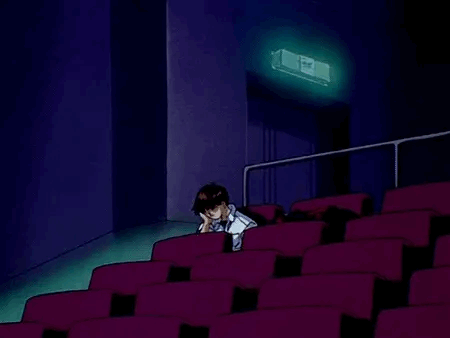
I know the feeling and to make sure you don’t get caught out again, this list of films not only covers your filmmaker wannabe basics, but also a few swarve anomalies that you can throw into the discussion like a true culture vulture.
Pulp Fiction (1994)

I shouldn’t be saying this but if you haven’t seen Pulp Fiction and you made it to film school, just leave. Hand in your student ID at reception and walk out the door, watch Pulp Fiction and come back to the next day. If you haven’t seen the 90s cult classic directed by Quentin Tarantino, it’s likely you’ve had at least one person disgusted by your lack of engagement for the film. But why is it such a necessity amongst the filmmakers of today? Well after a highly successful debut of Reservoir Dogs at Cannes Films Festival in 1992, Tarantino created another world of filmmaking. What he brought to the industry was a perspective and whole landscape that had never been seen before and the release of Pulp Fiction in 1994, certainly proved that Tarantino wasn’t a one trick pony. With a stellar cast, most of which were in their early days, and an outstanding storyline, Pulp Fiction is any filmmaker's paradise. And seriously, you can’t keep avoiding it.
Fight Club (1999)

Keeping it in the 90s, is David Fincher’s Fight Club, another revolutionary film from the king of psychological thrillers. If the name David Fincher doesn’t mean anything to you, it probably should, seeing as his films have grossed over $2.1 billion at the box office globally and earnt him 30 Academy Award nominations. Story, script and cast align perfectly in all of Fincher’s films, with Fight Club being no exception. Based on the 1996 novel by Chuck Palahnuik, Fight Club follows two men (Brad Pitt and Edward Norton, enough said) who initiate in an organised fight club. Sounds pretty straight forward until you get to the end and realise Fincher has been messing with all of us the entire time. In terms of early filmmaking and story structure, Fight Club is an excellent cult classic to sink your teeth into.
Psycho (1960)
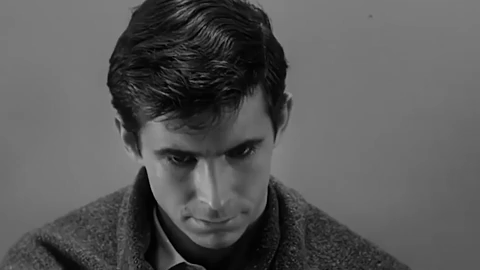
Another name to be aware of, Alfred Hitchcock laid down the foundation for thrillers for generations to come. For it’s time, Psycho was revolutionary as it broke the strict censorship and threat barriers created in the world of filmmaking in the 60s. There are some iconic scenes in Psycho, along with an unnerving score and a whopping $39.2 million profit in the box office. Hitchcock also took a gamble killing off the star of the film, Janet Leigh, 45 minutes into the film. However, Psycho just goes to show that risks can also pay off.
La Haine (1995) “The Hate”
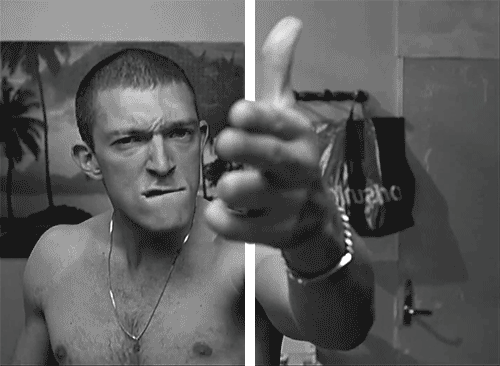
There’s a reason why some of the most revolutionary films can be found in the 90s. The 90s was the year of filmmaking that gave two fingers to the world and most of its stories belonged to the misfits and outcasts of society. Films were violent, punchy and led by young protagonists, raking in teenage audiences and voices. La Haine is a prime and clear cut example of the injustice between races and class in Paris, winning a Best Director award at Cannes in 1995. The film was so thought provoking and hard hitting, that the Prime Minister of France at the time forced his cabinet ministers to watch it. I’m sorry, if La Haine is good enough for the Prime Minister of France, it’s good enough for anyone.
Any Bong Joon Ho Film

With the success of Parasite still looming over Hollywood, Bong Joon Ho has to be the industry’s biggest underdog. Before the 2020 Oscars, most weren’t even aware of the director’s work or how gratifying he is as a storyteller. Each film is meticulously executed, with a hard hitting political message sewn beneath the surface of the overall film. Bong Joon Ho was quoted saying that this technique isn’t intentional and the breadth of the films he makes is found once they’re completed. From Okja that explores animal cruelty to Snowpiercer which explores class division, Bong Joon Ho has a way with imbedding societal issues into his films in a stylstic and structured way that should have any filmmaker filled with envy. He’s a strong voice for Asian cinema who’s had a sharp impact on western cinema without feeling the need to have all his films in the english language.
The 400 Blows (1960) “Les Quatre Cents Coups”

Whether you’re at school, in a lecture or amongst friends GUARANTEED the 400 Blows is going to worm its way into conversation at some point. The film was part of The French New Wave movement of the last 50s that created the foundation for French Cinema for films to come. The French New Wave was a significant movement that sought out to reject traditional ways of filmmaking and introduced new, more experimental ways of telling stories on screen. Francois Truffat won Best Director at the 1959 Cannes Film Festival for his directorial debut about a young boy struggling through Paris between his teachers at school and parents at home. The film shone a light on the misunderstood youth of the late 50s and early 60s, setting off a whole co-ord of films within the same genre later on.
Moonlight (2016)
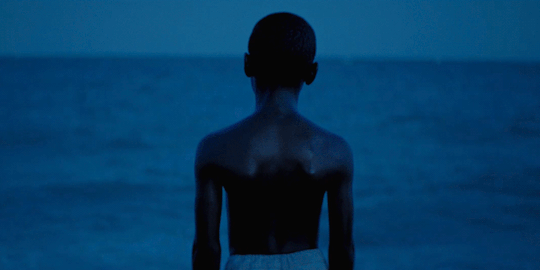
Barry Jenkins became the underdog of 2017, with his beautiful and captivating story Moonlight, following a young boy through early adolescence and adulthood. The film is impeccably shot with rich colours and seamless shots. Moonlight won big time at the 2017 Academy Awards, winning Best Picture, Best Supporting Actor and Best Original Screenplay. The film certainly set the world of filmmaking on fire and carved out space for more black filmmakers to enter into the industry.
Hereditary (2018)

It’s easy to forget that this film was released 2 years ago as it has had some groundbreaking reception since then. Hereditary, directed by Ari Aster, sets a bar and tone within horror films that has never been touched on before. Before him, your average horrors came from low budget gimmicky films where the lead actress would be running around in her underwear by the end of the film. Hereditary keeps everyone in their clothes (for the most part) and viewers on the edge of their seats for the entirety of the film. What stands at the forefront of this film is the slow pace and artistically beautiful frames that Ari Aster has meticulously curated to create a work of art. It’s everything you wanted in a horror film but could never really ask for, due to the over saturation of the horror films on the market and predictable jump scares that come with them. I found that the jump scares in Hereditary were put in the most unpredictable places, leaving me and most people visibly shaken and disturbed.
The Grand Budapest Hotel (2014)

Probably the first PG film on this list, Wes Anderson’s most iconic film The Grand Budapest Hotel, is a production designer’s paradise. Not only that, it features an insanely good cast with the likes of Jeff Goldblum, Ralph Fiennes, Bill Murray, Saoirse Ronan, Adrien Brody, Tilda Swinton, Willem Dafoe, Harvey Keitel, Jude Law and Edward Norton starring in the film. Wes Anderson’s mind is like a fairy tale book; he has the ability to create other worlds filled with bright colours and characters that EVERY ACTOR are dying to be. The Grand Budapest is probably Anderson’s most ambitious film to date and features some production design techniques that are beyond real.
Amélie (2001)

Amélie is your basic starter pack in French Cinema. Seeing as every charity shop has at least one copy of Amélie for sale, you have zero excuse for not having seen it yet. Even if French Cinema isn’t your thing, it’s very likely the entirety of French Cinema will be a topic of interest within your filmmaking course and Amélie is a fine place to start. The film ties the story, soundtrack and visuals perfectly and for any indie filmmaker, it’s a good example of taking a simple story but executing it in a complex way. In terms of box office, Amélie scored pretty well, with a humble budget of $10 million and making over $173 million globally. It was also nominated for five Academy Awards in 2002 and remains as one of the best and most iconic films to come out of France.
Good Time (2017)
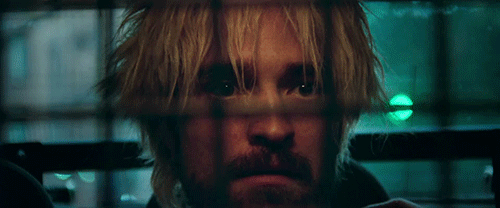
With a humble budget of $2 million, Good Time made double in the box office and had a Hollywood star at its forefront. In fact Good Time skyrocketed Robert Pattinson’s career and since it’s release, Pattinson has gone on to be part of some amazing projects. Seeing Pattinson in such a gritty role in Good Time, was highly refreshing and totally suited him in every way. New York based filmmakers, Josh and Benny Safdie co directed and wrote the crime thriller after having an impressive response from their previous film, Heaven Knows What. They recently completed Uncut Gems for Netflix starring Adam Sandler, which continued the crime thriller neon lights aesthetic that's come with their two previous films. Good Time is jaw droppingly good, and for those wanting to go into lighting, it is a must watch. The deeper the story goes, the more you feel the urge to gasp as Robert Pattinson feeds us with an unrecognisable performance.
8 ½ (1963)
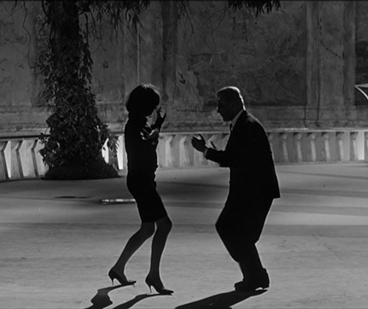
We are getting into sophisticated territory here with Fredrico Fellini’s 8 ½ . For those Scorsese and Tarantino fans out there, Fellini is your filmmaking bread and butter as both filmmakers have admitted to being heavily inspired by the Italian’s cinematic masterpieces. Fellini had the ability to tie reality with fantasy in a personal way, depicting a lot of his own life within his films. 8 ½ is no expectation, as it details the making of the actual film in the film and the rocky relationship he had with his wife, who starred in a few of his films. Fellini is named as one of the best filmmakers of all time, for his experimental style and off the wall filmmaking techniques. No one can or could do what Fellini did and there’s yet to be anyone who measures up to him.
Get Out (2017)

You like Get Out, I like Get Out, we ALL like Get Out. The film was the first of its kind in many ways and resonated with an audience that hadn’t yet been found. Jordan Peele wrote and directed the film, which grossed 100 times more than the film’s budget at the box office. This film is the epitome of less is more, taking a somewhat simple idea and heightening the possibilities of it. Jordan Peele became world renowned for it, along with British actor Daniel Kaluuya for his performance that earned him a Best Actor nomination at the 2018 Academy Awards. Get Out stands as a film that did what no one else has done before and for that, it deserves all the praise it gets.
All Celine Sciamma films
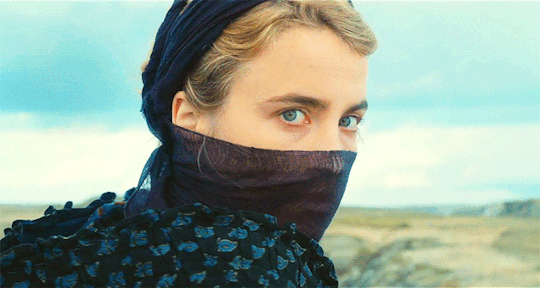
It’s likely the first time you heard of French filmmaker Celine Sciamma was from her groundbreaking, break through film Portrait of a Lady on Fire. Premiering at Cannes 2019, the film earned the Queer Palm d’Or and Best Screenplay Award. The film is simple, gorgeously shot and significantly deep in its telling. Not only will Portrait of a Lady on fire set you on fire, but all of Sciamma’s films sit on a level of filmmaking that is praise worthy. Her past films, Waterlilies and Girlhood explore coming of age stories amongst women and are executed in a highly personal and understanding way. She is the queen of female indie filmmakers and certainly one of the best french filmmakers in the industry to date.
I, Daniel Blake (2016)
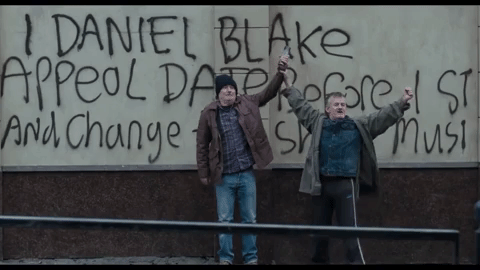
It can be hard to remove the gimmicks and big names from the stories being sold on screen and get straight to the heart of a film. Ken Loach has brought an incomparable style of filmmaking to the table that sets him apart from almost every filmmaker out there. It's easy to compare a Tarantino film to a David Fincher one, however, throw Ken Loach into the mix there's just about zero relation to either filmmaker or their styles. I, Daniel Blake won Outstanding British Film of the Year in 2017 BAFTAs and the Palm d’Or at the 2016 Cannes Film Festival. It’s no wonder why the Cannes Film Festival ate this film up seeing as the realism and grittiness of I, Daniel Blake gave a voice to a large part of society that is heavily ignored. This film leaves you nodding in agreement at the reality of the way things are even if that reality is incredibly hard to bear.
The Meyerowitz Stories (2017)

For those budding screenwriters out there, the work of Noah Baumbach is necessary in understanding three dimensional characters and the dialogue that comes with them. The Meyerowitz Stories stands from Baumbach’s other films, seeing as the screenplay and actual film are completely the same. On reading the screenplay of this film, I found not one single word of dialogue was forgotten about or changed, which is a pretty incredible achievement for any filmmaker. It certainly showed the actors (Dustin Hoffman, Ben Stiller, Adam Sandler, Emma Thompson, Adam Driver) had a lot of respect for the words on the page and each one of their performances sought to lift them off it. Baumbach’s writing style is beautifully accurate to real speech; there’s interruptions, over layered conversations and a great deal of tangents. The dialogue is like music and is only elevated by the well rounded cast.
The Master (2012)
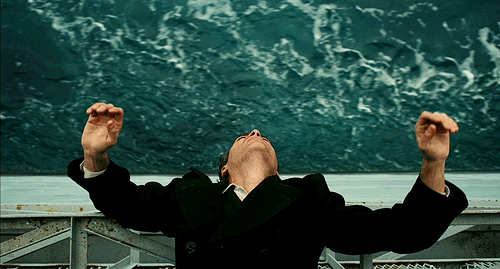
Filmmaker Paul Thomas Anderson has this hypnotic way of arresting his audiences to invest in his films for two and a half hours, then drop them at the last second. You don’t know why you’re watching or feel so absorbed in the worlds he creates, however it’s as if something over takes your attention, forcing you to carry on watching till the end. The Master is no different with a prolific cast and slow burnt pace to it. It's hard to explain what it is about this film that makes it so great. The cast made up of Phillip Seymour Hoffman, Joaquin Phoenix, Amy Adams and Jesse Plemons bring a top level performance and it feels like they’re always sitting on a secret. Every moment, every word, every shot is unmissable and the entirety of the film sets a bar of filmmaking that is flawless. Paul Thomas Anderson is a master (pardon the pun) of arresting his audiences and is someone to follow if you wish to do the same with your own films. For budding cinematographers, all of PTA’s films are worth a watch.
12 years a slave (2013)
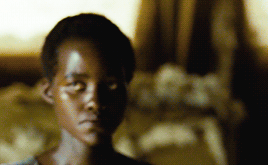
Probably the best film out there that depicts slavery, 12 years a slave is a heart wrenching and moving film directed by Steve McQueen. The sensitivity and authenticity Steve McQueen brings to his films is A class, as he does an outstanding job of really transporting his audiences to a time before. There are many scenes in 12 years a slave that can be considered some of the best ever made. The cast is in-sane with the likes of Chiwetel Ejiofor, Lupita Nyong’o, Benedict Cumberbatch, Michael Fassbender, Paul Dano, Sarah Paulson, Brad Pitt and even a young Storm Reid and Kelvin Harrison Junior, all joined within this story. Films with such casts are rare and it’s unquestionable why the film was nominated for Nine Academy Awards, winning three back in 2014.
The Social Network (2010)

Even though I wasn’t a fan of The Social Network, I can still appreciate the musicality behind the work of Aaron Sorkin and the screenplay he wrote for this. The collaboration between David Fincher and Aaron Sorkin on this film is something the world certainly needed, as two highly skilled masters of film came together and served us a huge slice of their talent. The Social Network is 100% the screenwriter’s film, and one to watch when trying to analyse successful dialogue within films.
Babel (2006)

Those who are into the episodic film, you are advised to look into the work of Alejandro G. Iñárritu. A name you might not be too familiar with, but you only need to have seen Birdman or The Revenant to appreciate his talents as a director and unique voice. Babel struck me as a poignant and INCREDIBLY structured film, with a satisfying 360 to it, as all the stories connect to one another in a distinct way. It’s so clear that a lot of time was put into writing such a screenplay and the production itself is to be noted, for scenes are filmed in Morocco, Tokyo, California and Mexico. That takes a LOT of money, time, effort and people, however if was certainly worth it as Babel is hands down one of the best films you’ll ever see.
The films of Xavier Dolan.

Xavier Dolan is Cannes Film Festival’s godson. The man has attended every festival for the past 10 years and each time, when in competition, he brings a personal and hard hitting perspective within his films. I have seen all but one of these films, and I suggest you do too. Xavier Dolan’s directorial debut I Hate My Mother scooped him numerous awards at the Cannes Film Festival and was made when Dolan was only 20. From then, he went on to direct several french/canadian films that won him the Jury Prize, Un Certain Regard and Queer Palm at Cannes. He’s a filmmaker who puts so much passion and devotion into his work, which is seen through the incredible acting, story and dialogue shown within his films. Two must see films of his would be Mommy and Laurence Anyways, especially for the acting. Xavier Dolan also directed the music video for Adele’s Hello music video which is one of the most watched music videos of all time, with 2.7 Billion views on YouTube.
You Were Never Really Here (2017)

Lynne Ramsay’s 2017 film starring Joaquin Phoenix is everything and more that you want from a thriller. It’s probably one of the best thrillers out there on the market and is highly underrated. Lynne Ramsay’s previous spellbinding feature We Need To Talk About Kevin sent pulses racing through the industry, giving Ramsay the recognition she deserves and even earning her a Palm d’Or nomination at the 2011 Cannes Film Festival. As a female filmmaker, Lynne Ramsay is one to watch for she has a knack at creating her own original slow burning, deep stories and directing them in a seamless way.
The films of Christopher Nolan
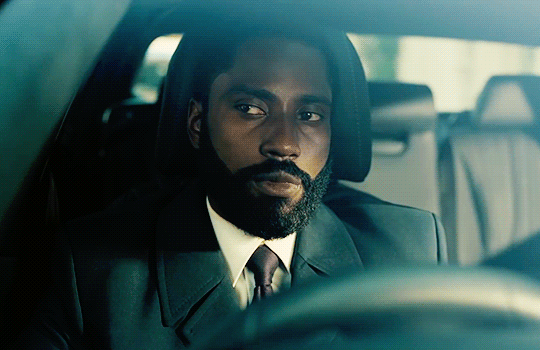
Christopher Nolan’s 11th film recently hit cinemas and no one knows what the hell is going on in it. However, there are plenty of other Christopher Nolan films that don’t melt your brain or send the guy next to you at the cinema cursing throughout the film in frustration at not understanding the film. The Dark Knight is said to have one the best performances in cinema history, with the late Heath Ledger taking on the role of the Joker. Not only that, but the likes of Gary Oldman, Michael Caine, Anne Hathaway and Christian Bale are also featured alongside Ledger, creating an untouchable cast. Dunkirk also deserves an honourable mention as one of Nolan’s films, seeing as I couldn’t breathe throughout the entire film. The second Dunkirk begins, the tension builds and you’re kept in a constant state of panic for the characters on screen. As far as war films go, Dunkirk is up there and it’s cinematic qualities were recognised at the 2018 Academy Awards, picking up three awards. What we can take from Christopher Nolan and his ability to execute stories on screen is that he spends a great deal on his screenplays before production. Tenet took FIVE YEARS to write (and probably another five to understand) certainly showing his devotion and dedication to his ideas as a filmmaker.
Honorouble mentions (that u should definitely check out)
Taxi Driver (1976) A Clockwork Orange (1971) Call me by your name (2017) Her. (2017) Do the right thing (1989)
Obviously there are 100s of other films worth watching that aren’t on this list, however if you were to watch all films mentioned on this list, you’d certainly get a different perspective on the possibilities of filmmaking and the stories they tell.
#movies#pulp fiction#fight club#psycho#david fincher#quentin tarantino#alfred hitchcock#la haine#bong joon ho#snowpiercer#okja#french new wave#the 400 blows#moonlight#barry jenkins#hereditary#the grand budapest hotel#wes anderson#amelie#french cinema#good time#robert pattinson#get out movie#jordan peele#celine sciamma#portrait of a lady on fire#waterlilies#i daniel blake#ken loach#the meyerowitz stories
111 notes
·
View notes
Text
Superman & Lois Pilot Script Review

I’ve been reliably informed that absence makes the heart grow fonder, and indeed as my laptop and everything on it have been unusable for a couple months after a mishap, I went from ‘maybe I’ll write something on the pilot script for Superman & Lois’ to ‘as soon as I can get my hands back on that thing I’m writing something up’. I’m actually surprised none of you folks asked about it when I’ve mentioned several times that I read it; I was initially hesitant, but I’ve seen folks discussing plot details on Twitter and their reactions on here, so I guess WB isn’t making much of a thing out of it. Entire pilots have leaked before and they just rolled with it, so I suppose that isn’t surprising. Anyway, the show’s been pushed back to next year, and also the world is literally sick and metaphorically (and also a little literally) on fire, so I thought this might be fun if anyone needs a break from abject horror.
(Speaking of the world being on fire: while trying to offer a diversion amidst said blaze, still gonna pause for the moment to add to the chorus that if opening your wallet is a thing you can do, now most especially is a time to do it. I chipped in myself to the NAACP Legal Defense and Educational Fund, and even a casual look around here or Twitter will show people listing plenty of other organizations that need support.)
What I saw floating around was, if not a first draft, certainly not the final one given Elizabeth Tulloch later shared a photo of the cover for the final script crediting Lee Toland Krieger as the director rather than a TBD, but the shape of things is clearly in place. I’m going for a relative minimum of spoilers, though I’ll discuss a bit of the basic status quo the show sets up and vaguely touch on a few plot points, but if you want a simple response without risk of any story details: it’s very, very good. Clunky in the way the CW DC shows typically are, and some aspects I’m not going to be able to judge until the story plays out further, but it’s engaging, satisfying, and moreover feels like it Gets It more broadly than any other mass-media Superman adaptation to date.
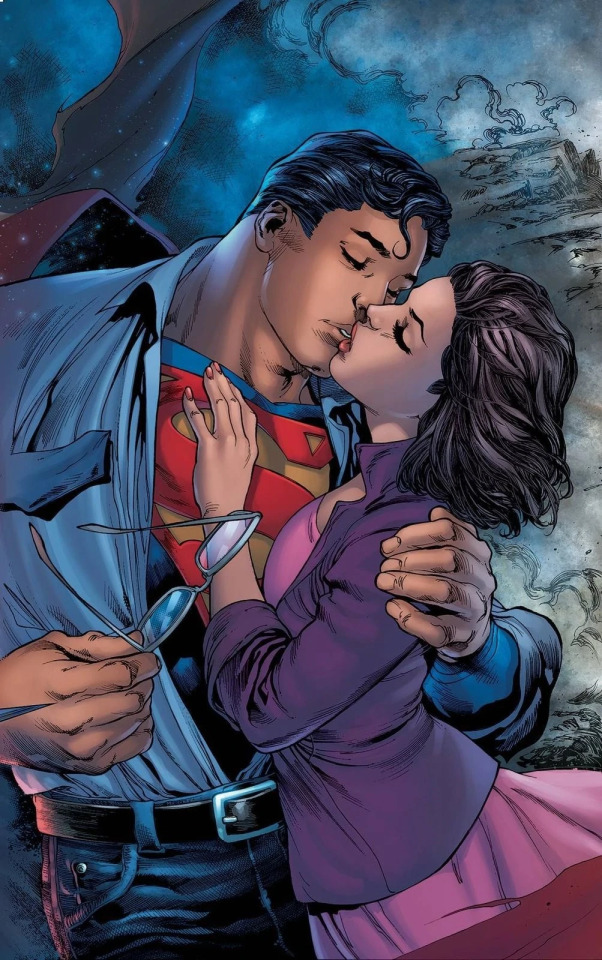
The Good
* The big one, the pillar on which all else rests: this understands Lois and it really understands Clark. Lois isn’t at the center of the pilot’s arc, but she’s everything you want to see that character be - incisive, caring, and refusing to operate at less than 110% intensity with whatever she’s dealing with at any given time, the objections of others be damned. Clark meanwhile is a good-natured, good-humored dude who you can see in both the cape and the glasses even as those identities remain distinct, who’s still wrestling with his feelings of alienation and duty and how those now reflect his relationships with his children. The title characters both feel fully-formed and true to what historically tends to work best with them from day one here in ways I can’t especially say for any other movie or show they’ve starred in.
* While the suit takes a back seat for this particular episode, when Superman does show up in the opening and climax it absolutely knows how to get us to cheer for him; there’s more than one ‘hell yeah, it’s SUPERMAN, that guy’s the best!’ moment, and they pop.
* While the superheroics aren’t the biggest focus here, when they do arrive, the plan seems to be that they’ll be operating on an entirely different scale than the rest of the Arrowverse lineup. Maybe they scripted the ideal and’ll be pared-down come time for actual filming and effects work, or maybe they’re going all-out for the pilot, but the initial vision involves a massive super-rescue and a widescreen brawl that goes way, way bigger in scope than any I’m aware of on the likes of Supergirl. I heard in passing on Twitter from someone claiming to be in the know that the plan for Superman & Lois is that it’ll be fewer episodes with a higher budget, more in line with the DC Universe stuff if not exactly HBO Max ‘prestige TV’, and whether it’s true or not (I think it’s plausible, the potential ratings here are exponentially higher than anything else on the network so they’d want to put their best foot forward) they seem to be writing it as if that’s the idea.
* This balances its tones and ambitions excellently: it’s a Kent-Lane family drama, it’s Lois digging in with some investigative reporting to set up a major subplot, it’s Superman saving Metropolis and battling a powerful high-concept villain, and none of it feels like it’s banging up at awkward angles with the rest. There are a pair of throwaway lines in here so grim I can’t believe they were put in a script for a Superman TV show even if they don’t make it to air, and they in no way undermine the exhilaration once he puts on the cape or the warmth that pervades much of it. This feels as if it’s laying the groundwork for a Superman show that can tackle just about any sort of story with the character rather than planing its feet in one corner and declaring a niche, and so far it looks like it has the juice to pull it off.
* While the pilot doesn’t focus on him in the same way as the new kid, Jonathan Kent fits well enough for my tastes with the broad strokes of his personality from the comics, albeit if he had made it to 14 rather than 10 without learning about his dad being Superman. A pleasant, kinda dopey, well-meaning Superman Jr. - the biggest deviation, one I approve of, is that he can also kinda be a gleeful little shit when dealing with his brother in ways that remind you that this is very much also Lois Lane’s boy.
* We don’t know much about the season villain as of yet, but it’s an incredibly cool idea that I’m shocked that they’re going for right away, and I absolutely want to see how they play out as a character and how they’ll bounce off all the other major players.
* The way this seems to be framing itself in relation to the Superman movies and shows before it feels inspired to me: there are homages and shout-outs to and bits of conceptual scaffolding from Lois & Clark, Smallville, Donner, and more, but they’re all shown in ways that make it clear that those stories are part of his past rather than indicators of the baseline he’s currently operating off of. We get a retrospective of his and Lois’s history right off the bat with most of what you’d expect, and combined with those references the message is clear: this is a Superman who’s been through all the vague memories that you, prospective casual viewer, have of the other stuff you saw him in once upon a time, but this series begins the next phase of his life after what that general cultural impression of him to date covers. It strikes me as a good way of carrying over the goodwill of that nostalgia and iconography, while building in that this is a show with room to grow him beyond that into something more nuanced (and for that matter true to the character as the comics at their best have depicted him) than they tended towards. Where Superman Returns attempted to recapture the lightning in a bottle of an earlier vision of him in full, and Man of Steel tried to turn its back on anything that smelled of Old and Busted and Uncool entirely, perhaps this splitting of the difference - engaging with his pop culture history and visibly taking what appealed from some of those well-known takes, while also drawing a clear line in the sand between those as the past and this as the future - is what will finally engage audiences.
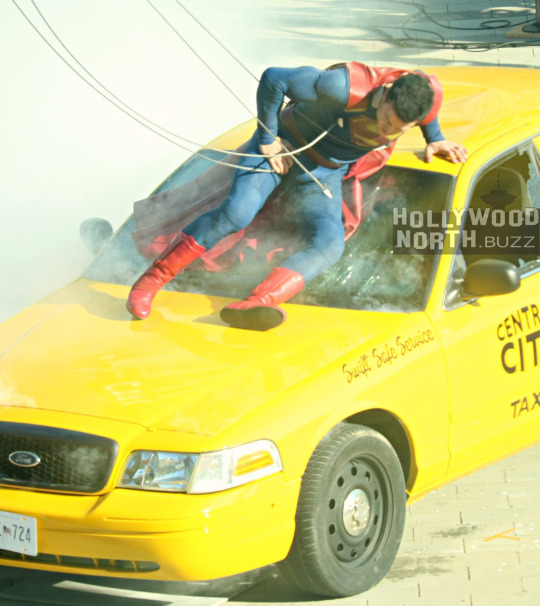
The Bad
* This is the sort of thing you have to roll with for a CW superhero show, and that lives and dies by the performances, but: the dialogue varies heavily. There are some really poignant moments, but elsewhere this is where it shows its early-draftiness; a decent amount is typical Whedon-poisoned quippiness or achingly blunt, and some of the ‘hey, we’re down with the kids!’ material for Jon, Jor, and Lana’s kid Sarah is outright agonizing. I suspect a lot of it will be fixed in minor edits, actor delivery, and hopefully the younger performers taking a brutal red pen to some of their material - this was written last January and the show’s now not debuting until next January, they’ve got plenty of time for cleanup - but if this sort of the thing has been a barrier to entry for you in the past with the likes of The Flash, this probably won’t be what changes your mind.
* There are a few charming shout-outs to other shows, but much moreso, Superman & Lois actually builds in a big way out of Crisis. Which is a-okay with me, except that what exactly that was is rather poorly conveyed given that lots of people will be giving this a spin with no familiarity with that. Fixable with a line or two, but important enough to be worth noting.
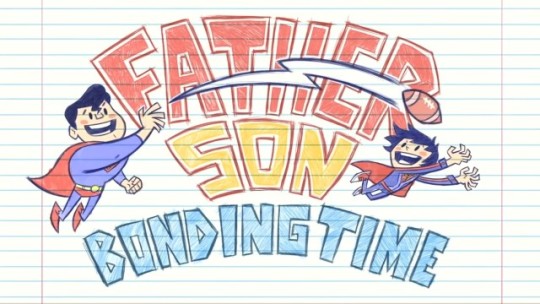
Have to wait and see how it plays out
* The series’ new kid, Jordan Kent, is so far promising with potential to veer badly off-course. He’s explicitly dealing with mental illness, and not on great terms with Clark at the beginning in spite of the latter’s best efforts, the notion of which I’m sure will immediately put some off. Ultimately the commonalities between father and son become clear, and he’s not written as a caricature in this opening but as a kid with some problems who’s still visibly his parents’ boy, but obviously the ball could be fumbled here in the long term.
* Lois’s dad is portrayed almost completely differently here than in the past in spite of technically still being her military dad who has some disagreements with her husband. There are some nice moments and interesting new angles but it seems possible that the groudwork is being laid for him to be Clark’s guy in the chair, and not only does he not need that he most DEFINITELY doesn’t need that to be a member of the U.S. Military, especially when one of the first and best decisions Supergirl made when introducing him was to make clear he had stopped working with the government any more than necessary years ago. Maybe it can be stretched if his dad-in-law occasionally calls him up to let him know about a new threat he’s learned about, and maybe they’ll even do something really interesting with that push-and-pull, but if Superman’s going to be even tacitly functioning as an extension of the military that’s going to be a foundational sin.
* As I was nervous about, Superman & Lois has some political flavor, but much to my delighted surprise, there’s no grossly out of touch hedge-betting in the way I understand Supergirl has gone for at times. As of the pilot, this is an explicitly leftie show, with the overarching threat of the season as established for Lois and Clark as reporters being how corporate America has stripmined towns like Smallville and manipulated blue collar workers into selling out their own best interests. Could that go wrong? Totally, there’s already an effort to establish a particular prominent right-wing asshole as capable of decency - without as of yet downplaying that he’s a genuinely shitty dude - and vague hints that some of the towns’ woes might be rooted more in Superman-type problems than Lois and Clark problems. But that they’re going for it this directly in the first place leaves me hopeful that the show won’t completely chicken out even if there’ll probably be a monster in the mix pulling a string or two; Greg Pak and Aaron Kuder’s Action Comics may justify Superman punching a cop by having him turn out to be a shadow monster so as to get past editorial, but it’s still a story about how sometimes Superman’s gotta punch a cop, and hopefully this can carry on in that spirit of using what wiggle room it has to the best of its ability.
So, so far so good. Could it end up a show with severe problems carried on the backs of Hoechlin and Tulloch’s performances? Absolutely. But thus far, the ingredients are there for all its potential problems to be either fixed, subverted, or dodged alright, and even when it surely fumbles the ball at junctures, I earnestly believe this is setting itself up to be the most fleshed-out, nuanced, engaging live-action take on these characters to date. And god willing, if so, the first real stepping stone in decades to proper rehab on Superman’s image and place in pop culture.
18 notes
·
View notes
Note
So I just listened to your presentation about the Tolkien fandom - which is really good btw, very informative - and the point that transformational fanfiction is mostly female got me thinking (mainly bc in my experience fanfiction in general seems more female, I have knowingly read only three authors who identified as male). Do you think that's bc most fandoms have a distinct lack of fem characters, so fem writers have an incentive to write transformational fics that male writers don't?
Oh my, oh my this is such a good question that I fear I will not answer it as well as it deserves. But I’ll try!
(Here is the presentation mentioned in the ask, for anyone who wants context. Both video and text are available at the link.)
Why transformational fandom trends female is complicated and has been the subject of much discussion/debate since the advent of fanfic studies back in the early ‘90s. Early scholarship focused on women using fanfic to expand the original texts so that the better reflected the women/author’s own experiences, especially where emotions and relationships were concerned. From Jenkins’ Textual Poachers (1991):
Fans want not simply internal consistency but also what Ien Ang has described as “emotional realism.” Ang (1985) suggests that Dallas fans viewed the program not as “empirically” true to real-world experiences of upper-class Texans but rather as “emotionally” true to the viewers’ personal lives…. (107)
Female readers entered directly into the fictional world, focusing less on the extratextual process of its writing than on the relationships and events. … The female reader saw her own “tacit inferences” as a legitimate part of the story …. Moreover, male readers tended to maintain the narrative’s pre-existing focus on a central protagonist, while female readers expressed a greater eagerness to explore a broader ranger of social relationships …. (108-9, citing David Bleich [1986])
Camille Bacon-Smith, author of Enterprising Women (also 1991) writes:
Fanwriters, like soap opera fans, want to see characters change and evolve, have families, and rise to the challenge of internal and external crises in a nonlinear, dense tapestry of experience. Whether because of innate qualities or socialization, women perceive their lives in this way, and they like to see that structure reproduced in their literature. The writing experience becomes one of participation in the lives of the characters. (64)
Jenkins and Bacon-Smith really established fanfic studies as we know it, so I include these ideas to show how foundational they are and, I believe, underlie more recent resistant/reparative motives. Underlying this early assumption is that mainstream media and literature doesn’t represent the experiences of women, so we have to create it ourselves. Hence what we’d now call transformational fandom: the shifting of authority onto the fanwriter to rework a fictional universe according to her own experience of reality. I think this holds true in Tolkienfic fandom, although it is more complex than the theories above (rooted in media, not book, fandom) suggest, in that my research shows that Tolkienfic authors engage in much more negotiation with canon details and (most importantly) Tolkien’s authority. In other words, they care about how to create that “emotional realism” but within the confines of the canon, which many would take to include Tolkien’s views, unstated in the texts, on the canon and even his moral prerogatives.
My sense is that there is a definite connection between the early ideas of women creating fanworks to see their realities and experiences represented in the fictional universes they love and the present-day idea of fanfiction as a form of resistant reading. (Here, I am perfectly willing to have my hand smacked by people better versed in fan studies history if I’m mangling or missing key pieces of the relationship between these two schools of thought. Just speak up.) Because part of the experience of being a woman is opening a history book and not seeing the lives of women represented or going to a film where women usually make up a minority of the cast (and are often cast into stereotyped roles). Part of our experience as Tolkien fans is coming to terms with our love of a book (LotR) where, to borrow the wince-inducing stat cited by Una McCormick, there are more named horses than women. (The Silmarillion fares better in terms of named women but still isn’t great, as I have argued elsewhere, in providing those named women with roles and agency equal to that of the men.)
(Here I’m going to focus on the Tolkienfic fandom. I know your question was broader than that, but I study the Tolkienfic fandom, and as a fan, I’m monofandom myself, so I’m hesitant to speak about the norms and practices in other fandoms, nor am I as familiar with their scholarship. Others with insights about other present-day fandoms, please do add on.)
Una McCormick has a fabulous essay in Perilous and Fair that positions Tolkienfic as a form of what she calls “reparative reading”:
The complexity of such reading and writing practices and the ambivalence of the creative labor involved in making repairs upon such texts have driven some women readers to find a presence for themselves in The Lord of the Rings through writing fanfiction as a creative-critical response to Tolkien’s text. By weaving female characters into the familiar narrative, or else focusing upon marginalized characters such as nurses, servants, and non-combatants, these authors write themselves–or those like themselves–into the events of the War of the Ring. (310)
Una is a fanfic writer herself and a Tolkien scholar, and her work is unique in this sense, because she is intimately familiar with the Tolkienfic community as a participant and also because she has written one of the rare fanfic studies pieces focusing exclusively on our fandom. However–and I don’t think Una would disagree–reparative reading is just a part of Tolkienfic fandom, so I don’t think it fully explains the “transformational is female” trend. It is certainly part of it. My survey data shows a strong interest among Tolkienfic authors; 78% agree that “Writing fan fiction lets me explore the perspectives of female characters.” (80% of readers “like reading fan fiction about female characters.”)
What is interesting is that there is not a big difference in how women and men respond to the statement “Writing fan fiction allows me to explore the perspectives of femalecharacters.” 78% of women agreed; 73% of men agreed. Where there is a significant difference: 90% of nonbinary survey participants agreed with this survey item. (It’s worth noting that the sample of men was small. Less than 4% of survey participants identified as male.)
I also feel that I have to note that, historically, Tolkienfic fandom has had contingents hostile to including women characters in Tolkien-based fanfiction. Many who started in the fandom when I did (mid-2000s) will remember when “OFC = Mary Sue” (itself a term that I find sexist since the number of scrawny, nerdy dudes who become superheroes in comics attests that adding a dose of Awesome to a whopping pile of Ordinary is not inherently deserving of derision), and many people avoided writing women characters because they were a flame magnet. Key to this piece of history, too, is that, in my experience, the detractors and bullies of creators who wrote about women? Were, like the rest of the Tolkienfic fandom, a majority women. This was not guys trying to preserve a boys-only treehouse in the canon; this was women policing other women’s production of fanfiction, often using the canon itself as a tool to do so.
It’s also worth noting that changes in fandom perception of women characters has been due to the concerted effort of fans to draw attention to sexism in the canon and in the fandom and to celebrate fanworks that feature strong women characters. @vefanyar‘s concept of the textual ghost is the prime example in my mind, in that she not only drew attention to the problems in the canon–simply scrolling through her Textual Ghost Project is a visually provoking experience–but the potential for fanworks creators to address those problems in the reparative way that Una McCormick identifies. @vefanyar, among others, has paired this work with the canon with a concerted, years-long effort to encourage and celebrate fanworks about Tolkien’s women, creating a climate where, finally, it feels like writing about women comes with more rewards than risks.
So. To conclude. I think that the scholarship, my data, and my own experience as a Tolkienfic author/archive owner points to an answer to “Why is transformational fandom overwhelmingly female?” in the context of Tolkienfic fandom, as: It’s complicated. Yes, some of us are working to address the inequality both in the number and quality of female characters in the canon. But as my presentation states, this is just a partial picture because Tolkienfic fandom is not fully transformational, and women are attracted to this fandom for reasons that have nothing to do with establishing gender parity in the canon. I earlier held up the stats of 78% of authors (and 80% of readers) enjoying fanfiction about women to suggest that there is an interest in telling women’s stories in the fandom, but I’d also say that the one in five not interested (or not sure if they’re interested) in stories about women aren’t insignificant. This is still a sizable contingent of the fandom, a majority of whom are women. The desire to produce transformational fanworks runs deep in women fans and may hearken back to Jenkins’ and Bacon-Smith’s broader ideas about women’s experiences, may suggest a difference in how girls/women are socialized, may reflect barriers to entering more affirmationally oriented fan communities, or may come down to something else (like the social/community aspect of fandom) entirely.
53 notes
·
View notes
Text
Crazy Ex-Girlfriend season one full review

How many episodes pass the Bechdel test?
100% (eighteen of eighteen)
What is the average percentage per episode of female characters with names and lines?
44.4%
How many episodes have a cast that is at least 40% female?
Eleven, over half the season. Six of those are over 50%, and two of those are over 60%.
How many episodes have a cast that is less than 20% female?
Zero, unsurprisingly.
How many female characters (with names and lines) are there?
Thirty-seven. Ten who appeared in more than one episode, four who appeared in at least half the episodes, and two who appeared in every episode.
How many male characters (with names and lines) are there?
Forty-four. Twenty who appeared in more than one episode, four who appeared in at least half the episodes, and two who appeared in every episode.
Positive Content Status:
Mostly good, if a bit wonky; there were a lot of acknowledgments of real issues (particularly women’s issues), but sometimes it felt more like they were just shout-outs for the brownie points rather than genuine efforts to explore something meaningful. There were also a few problems with characters/relationships that the show never called out as wrong and therefore seemingly endorsed as normal, which makes it feel less self-aware than it appears to be at times (more on that under the cut). Altogether though, it’s never egregiously upsetting, and there is one subplot (ironically, one which has nothing to do with women) which was a true unexpected joy to behold (average rating of 3.05).
General Season Quality:
Fluctuates. It has a tone problem which can be confusing as it is unclear how information is intended to be interpreted, and the discomfort can seriously damage the comedy. When it is good though, it’s very fun, sometimes touching, and weirdly addictive.
MORE INFO (and potential spoilers) under the cut:

I noted when I reviewed the very first episode that this is Not My Usual Flavour in terms of plot conceit, and if it weren’t for all the recommendations/requests I got to include the show on this blog, there’s about a 1% chance I would ever have watched this for my own amusement (that 1% comes from a very charming gifset of a scene which I presume is from the latest season; I’ll tell you what it was when we get there). One season in, I can say this much: I’m not mad y’all got me on to this. It’s weird and different, but it’s not painful (except, often, when Greg is around - we started on such good terms in the premiere but at this point I honestly loathe him). Against my better judgment and typical inclination, I am interested to see where it all ends up, working with the idea that as much as the driving force of the series from the outside appears to be romance, internally it’s really about these messy characters figuring themselves out and and changing their strange little mundane lives for the better. The first step on the road to improvement is self-awareness, on which subject...
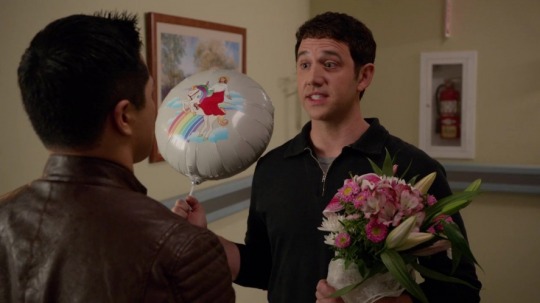
...the main barrier I encountered in really getting into this show and relaxing to enjoy it is the issue of narrative trust, which is all about believing that the story is going to unravel and analyse its own content in a thorough, intelligent, and valuable way. Narrative trust is essential regardless of context; the same as you need it in order to sell the viewer on extravagant bizarro world-building for an intergalactic sci-fi story, you also need it in order to convince them that it’s worth exploring the comparatively small-fry and banal character motivations in a prescription rom-com. As a part of its initial conceit, Crazy Ex-Girlfriend promises to deconstruct its own deliberately-inflammatory title (it makes this promise at the beginning of every episode, in its annoying opening title sequence); Rebecca’s mental state and the journey it takes her on is the core of the narrative, and we are being asked to trust that the show will follow through on the unraveling and analysing of that content. For the most part, it does follow through, but it also intermittently falls short in two key arenas which lead to the damaged narrative trust: tonal consistency, and secondary character reinforcement.

When I was five episodes in, I discussed this show with a friend who had watched for a while (he wasn’t sure how far in he got, in the end) before eventually giving up; at that point, I wasn’t sure what to say about the show or even if I considered myself to be enjoying it, and my friend agreed that the problem I was having was the same problem that made him quit the show: tonal confusion. Part of that is about being unsure at times whether you’re being invited to laugh at Rebecca, or just at the situation; at times the show seems to make light of extremely serious emotional issues, and at others it is very sympathetic to Rebecca’s struggles; sometimes disturbing behaviour is not framed by the narrative as being worth calling out, and then sometimes, the chastisement Rebecca receives feels undeserved, over-the-top, or unfair to the wider context of her mental state. The inclusion of musical numbers can occasionally contribute to the tonal inconsistency in a big way, as some of the more shoe-horned in pieces come out of nowhere, do not revolve around topics of vital importance to the episode, or the style of the music itself can be un-ironically incongruous with the mood of the scene (and sometimes it’s just...a bad time to interrupt with a song). Basically, tonal inconsistency can nullify standard narrative conventions and the expectations we are trained to associate with them, because we can’t predict intention; is this cliche meaningful, or incidental? Are they going to acknowledge it at all, and if they don’t, is it deliberate, or an oversight? Are they going to subvert it, or play it straight? A consistent tone means that we can trust the narrative to handle content in a specific way, and in turn we can decide if that’s something we want to return for episode after episode, or not. This is also something that can significantly impact the perception of the show’s approach to social issues, as the spotty follow-up on acknowledged challenges for women can give the impression of paying lip service rather than actually delving in to the problem; you just don’t know if this is gonna be an episode that could be bothered to analyse its own content, or if it’s gonna brush it off; and if it does brush it off, is it because the creators don’t believe that issue is really important, or is exploring it just inconvenient to the story they’re telling right now? You just can’t trust the answer to be the same twice in a row, and consequently, the reaction to a new plot thread or subject is more likely to be apprehension at not knowing where this is headed, instead of engaged interest in going along for the ride to find out.
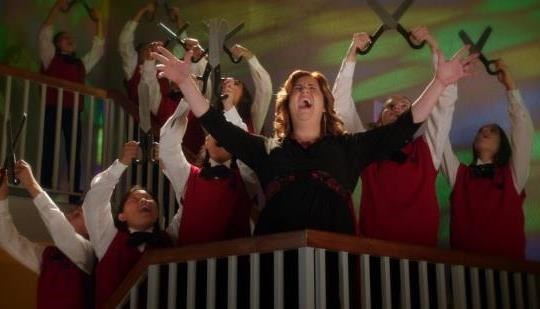
A big contributor to tonal inconsistency (and a victim of the same, in a feedback-loop kind of way) is secondary character reinforcement, by which I mean, the reinforcement of themes or behavioural standards for the protagonist as reflected by secondary characters. Paula is the character who most fully exemplifies this, as she encourages Rebecca’s worst impulses (including getting angry with her or ignoring her wishes when Rebecca tries to exercise self-restraint or break unhealthy patterns), she commits various criminal acts (some with Rebecca, but also some without Rebecca’s knowledge), and she invades the privacy of almost every character involved in the situation and even takes steps to manufacture their behaviour without their knowledge. Paula’s obsession with Rebecca’s love-life is often more terrifying and troublesome than Rebecca’s obsession with Josh, and while the show at times acknowledges that Paula is being outrageous, it pretty consistently fails to actually call out that behaviour or brand it as Bad News on the same level as anything Rebecca does - Paula’s behaviour is mostly put forward as overzealous but, eh, normal enough. The show holds Rebecca to a completely different standard of behaviour, and narratively punishes her for overstepping those bounds even as the character next to her leaps straight past the same barrier without a word. And Paula isn’t the only one - Greg is the other big sinner in terms of unchallenged poor behaviour, and his smug self-righteousness and tendency to be packaged as some kind of down-on-his-luck ‘complicated intellectual’ (as if that earns him special allowances for being a total prat) is what makes me so much more infuriated by his character (also, it’s a sexist double-standard to allow Greg more moral leeway for his ‘issues’, most of which are just self-generated prideful whinings). And then there are issues like Rebecca’s mother being let off the hook for intense life-long emotional abuse because she said she was just doing it to toughen Rebecca up, as if that makes severe psychological damage acceptable, or Valencia’s abusively controlling attitude with Josh, which I spent the entire season waiting to have explicitly denounced only to end up with her dumping him for not delivering the marriage proposal she had decided she deserved (something which the show kinda approached as reasonable, as if Josh ‘owed’ Valencia marriage after they’d been together for so long). When the show calls out some behaviour but is curiously mute on others, and when some characters are held to different standards to the rest, consistency takes a hit, and narrative trust runs a little short. If you’re left frustrated by hypocritical or contradictory attitudes and you can’t tell if some things are going uncontested for a reason or just out of ignorance, that’s not a good state to be in when you’re trying to also enjoy something. And in the context of this blog, the lack of narrative trust often led me to dismiss progressive-sounding lines or moments because I had no faith in the idea that the show meant what it said or was gonna follow through with relevant action.

As is often the case with complaints, the above probably sounds like a more dire flaw than it is in practice (I say probably; depends if they fix the issue or not, because if it persists across the series it could be crippling). The good news is, there was still plenty to like in season one, some good character development and emotional exploration that I hope is bolstered in the long-term as the show continues, and there was that one thing which really genuinely surprised and impressed me, which was Darryl’s bisexual coming-out. I figured the show would give us a token gay (and I’d picked White Josh as the one long before he was revealed to be so), but I did not expect that to be paired with the revelations of a second queer character, let alone that the journey of that character’s sexuality would be so low-key and wonderful. Darryl wades through some ugly internalised homophobia in order to make peace with himself, but that conflict doesn’t create drama; it creates hesitance. White Josh accepts no shit and protects himself from being hurt by Darryl’s discovery process, but he is also unfailingly understanding, highlighting the issues with Darryl’s thinking without getting personally offended or losing his temper, giving Darryl the tools to mend his problems on his own terms without ever revoking his support in the meantime. Because the subplot is so undramatic, it’s easy to overlook just how healthy it is, and it is able to dig in to a variety of real troubles that people may often encounter in actual life, but without painting those troubles as all-encompassing soul-destroying growing pains inevitably associated with coming out and/or living as a queer person in our society. We really need more of that in the world, more acknowledgment of the nuance that goes beyond garden-variety open bigotry, and especially more queer stories that are complicated without being depressing. The tact and attention to detail in Darryl and White Josh’s story is the single thing, above all others, which gives me hope for the future of Crazy Ex-Girlfriend. It may yet earn my trust.

#Bechdel Test#full season review#female representation#Crazy Ex-Girlfriend#Crazy Ex-Girlfriend season one#Crazy Exgirlfriend
6 notes
·
View notes
Text
Unsane
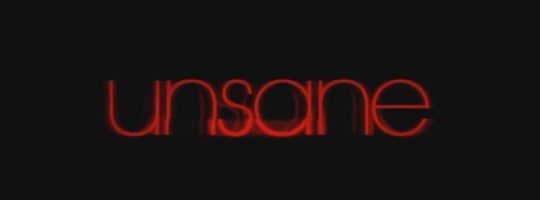
As is, frustratingly, often the case, Unsane is an experimental film on the surface only. Lacking the story to really take its experimental approach to the next level, instead leaning on genre cliches and predictable twists to help further its story, the film is one that winds up only slightly more than middling. Fortunately, the decision by director Steven Soderbergh to shoot the film on his iPhone proves to be a fantastic decision, giving the film a heavy dose of realism via a rather formalistic (in part) approach to making this film. A story about a woman, Sawyer Valentini (Claire Foy), who moves from Boston to Pennsylvania to get away from her stalker, the film portrays what happens to Sawyer after she is involuntarily committed. Interacting with deranged patients such as Violet (Juno Temple) or a recovering opioid addict in Nate (Jay Pharoah) who befriends her, believes she is being stalked, and seeks to help her, Unsane is an often thrilling film. As Sawyer is committed and continues to believe she sees her stalker only to find that her stalker David Strine (Joshua Leonard) has moved from Boston to work at the psychiatric center that Sawyer is being held in, the film takes a truly sinister turn. While engrossing as a film and possessing ground-breaking visuals, Unsane is undone by cliches and a bad ending that wind up taking the air out of the film.
Visually, Unsane makes its name. Soderbergh is certainly known for being rather experimental with his films visuals, whether it be via homage as in The Good German or more stylistic as in Traffic. Unsane is certainly no exception with the film’s iPhone visuals always making their presence known. Yet, the film never looks cheap. It is a film shot, edited, and directed by Soderbergh, all while possessing the look and feel of a film put together by such a Hollywood director. This is certainly a huge determinant in Unsane’s overall success as an experiment, as the film is able to utilize its phone-as-a-camera approach to be able to put the audience right into the film as an engaged observer, bordering on exhibiting voyeuristic behavior. It is almost reminiscent of found footage in the sense that both seek to put you there, but found footage is a technique that, inherently, lets the audience know that they are not there even if the visuals are taken by someone who was there, allegedly. Unsane, however, is a film that breaks down this barrier. Every bit of this film feels as though the audience is lurking in the corner, hiding down a hallway, or standing there as the events of the film transpire, allowing the events to be all the more intimate and deeply felt. As Sawyer fears for her life and screams in panic as the doctors pin her to the bed to tie her down after she hit another inmate, the audience is given a front row seat by Soderbergh. To accomplish this, Soderbergh relies upon a deep depth of field with everything in focus. This allows hallway shots to ring with realism as the faces of those at the end of a hallway can still be seen rather clearly. Similarly, there are shots from the ward that, when over-the-shoulder, reveal people walking in the hallway and into the ward or, in the case of David, looming in the window to keep an eye on Sawyer.

Soderbergh’s visuals also contain a rather fitting color palette, as the film’s action is predominantly laced with the yellowish walls of the facility aside from the introduction and final act both being shot through a washed blue tint and a sequence in a trunk being shot with night vision. Not only are all three cold colors - with the implied negative emotions of those colors - but the blue, in particular, proves to be quite relevant. As David obsesses over Sawyer, he notes that he first fell in love with her when he saw her wearing a blue shirt. Throughout the film, she wears a blue jacket over her hospital-issued clothes with the film’s obvious blue tint coming back in the final act as she desperately tries to flee her stalker. This obsession with the color blue is such a negative context is reminiscent of Traffic in how the blue-portion of that film is dedicated to a politician tracking down his drug addicted daughter. Here, the plot of Unsane is, obviously, different, but nonetheless contains a parent trying to find their daughter and get help for her against all odds, while facing a powerful entity that wishes to control her every action and motivation. The film’s usage of blue may further symbolize the power that David has over Sawyer - further underscored by the constant low-angle shots of David - as his presence is constantly felt by her, thus giving him considerable control and power over her. As blue is often recognized as a rather masculine color, it is not hard to come to this conclusion as the power and the masculinity implied the color blue are relevant to Unsane in which a man’s toxic masculinity exerts considerable influence over a woman’s life to the point she is always cloaked in blue and must fight for her life under the blue of night.
The usage of an iPhone provides far more than giving the audience an intimate view of the film’s events. Instead, Soderbergh uses it as a device to help create terror. As David stalks into the night to find Sawyer, Soderbergh washes the scene out in blue with a tight close-up of David from an extreme low-angle, while the camera bounces up and down as he makes his way into the forest. As Sawyer is drugged and given too much of her “medicine” by David - who, naturally, distributes the drugs - Soderbergh whips the camera around the room as she runs around, going out of her mind. Superimposing a front-view of her running around on top of an over-the-shoulder shot of her running around with her face poking out of the back of her head, the shot is one that is wholly disorienting and uncomfortable. Also utilizing a spinning camera - to some degree, this is apparent when Sawyer wakes up in the trunk of a car with the camera spinning around as she shifts around, capturing the claustrophobic scene while only serving to further disorient the viewer - at various times that really gives the film a great punch, Soderbergh does not just lean on the technique as a mere gimmick. Rather, he is able to create great tension from the iPhone. Not only are we right there, but his efforts to disorient and make the audience uncomfortable go a long way. Even typical low-angles - which are prevalent here - as the camera sits in a hallway as the drugs are given out prove to be disorienting with the overwhelming dark hallways looming from all over while the underqualified orderlies and David mill about in positions of power as well. These shots allow Soderbergh to underscore who is truly in control in this film. It is, obviously, not the patients. Rather, it is the “doctors” and even the clinic itself who exert control over them from beginning to end. The camera work is further beneficial, even when Soderbergh is more typical. As Sawyer screams from solitary confinement, the camera backs away ominously and pulls back down a nearby hallway. Cloaked in darkness and desolate, the shot is a truly sinister one that underscores two simple facts: she is alone and nobody knows she is there.

Though it works, one area will undoubtedly divide audiences is in how everything just feels...off. It is perhaps, in large part, due to the fact that the film takes place in a mental health facility. Thus, the patients are, literally, off. However, even the acting by “sane” characters such as Claire Foy or Jay Pharoah are off. The performances are still good, as both nail their respective characters, but just a bit alien. Joshua Leonard, similarly, acts quite alien as he descends into more homicidal madness in order to possess Sawyer. A lot of this is likely contributed by the film’s dialogue, which is quite odd at all times. Little jokes such as Sawyer saying she will give Nate a blowjob to use his phone only to “take a reign check” on it, to which Nate barely responds as he knew she would do so and was only being facetious. This odd dialogue can be found throughout the film as everybody acts just slightly more abnormal than regular humans would in a way that is silently disquieting. Normal conversations between Sawyer and her mother even ring with this same oddity, as both seem to practically go through the motions of what a normal conversation should be between mother and daughter, even if the pair clearly love one another deeply. This, in large part, is due to the film’s setting but likely also to allow Soderbergh to capture the film’s intentionally tacky elements. It is a film that is practically a B-movie at times with this cheesy and awkward dialogue, coupled with equally awkward performances allowing the film’s surface-level elements to reveal its rather intentional low-budget feeling.
Thematically, it is certainly clear that Soderbergh harbors some skepticism towards psychological clinics, an element that this review will return to in greater depth. However, at the center of the film’s character drama is the fact that Sawyer is being stalked by a man named David Strine. On the surface, he is a regular guy. Sawyer’s story of meeting him is such that she admits she did not mind him and took pity on him due to them having met as a result of her work at a hospice where David’s father was being cared for until he died. Thus, she empathizes with him, especially since her only father died. However, in the aftermath, his obsessive behavior as he texted her constantly, stalking behavior, his memorizing of every fact about her life, his possessiveness, and his desire to control her at every turn, really rises to the surface. Having planned out every detail of their life from where they will live to what they will do, David seems unaware of his crimes as he just lays down next to Sawyer after attacking her and everyone near to her, telling her he would love to have kids with her. It is a relatively normal moment, aside from the fact that he is bleeding from the neck, has broken her ankle, and has killed her friend and her mother along the way. The nature of the David character is such that it is a clear attempt to capture the “nice guy” who believes that kindness will earn them what they want from a woman. Soderbergh juxtaposes this nice guy with a regular guy who is on Tinder and is set to sleep with Sawyer without any hassle, except she encounters a psychological block due to her experience with stalkers. In essence, this is a film about a woman who has been stripped of everything. She cannot experience love, as the thought of David looms large. She cannot experience freedom, as she winds up being involuntarily admitted to this hospital where, naturally, she is stripped and cut off from the rest of the world right away. Once there, she is given drugs by David who works as an orderly in that department and even goes so far as spiking her doses. He seeks to control her, only finding that he is able to do so when he orchestrates her release and locks her in solitary confinement. This film, as a result, is a chilling representation of the damage a so-called “nice guy” can accomplish through the obsessive and possessive behavior they so often exhibit when they fall “in love” with a woman. Thus, Unsane is able to achieve tension through the fact that what is happening to Sawyer can happen to any woman who is “crazy” enough to show kindness to the wrong man. Feeding into their toxic masculinity and low self-esteem, women who are kind enough to all strangers wind up having to live as Detective Ferguson (Matt Damon) advises Sawyer to live: in a constant state of fear with their heads on a swivel. The film’s camera work further benefits this idea as it allows, especially women, to experience what is happening to Sawyer first-hand as Soderbergh is able to take this paranoia and fear to channel it to a cautionary tale of one of the major crises occurring in this world: men who cannot take a simple no. Even worse, Sawyer is locked up as she is seen as being crazy for thinking a man in stalking her while David is called a “gift from God” for his efforts at the hospital.
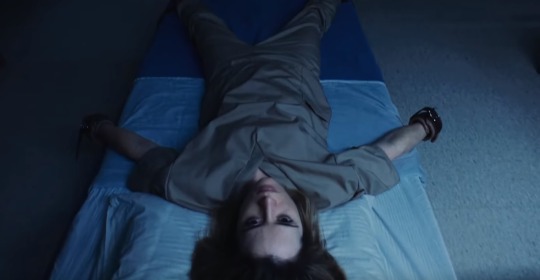
In terms of examining the conditions within a psychiatric facility, Soderbergh’s film very much laments the way in which hospitals exploit insurance and patients as they admit people against their will for reasons such as having thought of suicide without informing anyone near them or allowing them access to the outside world. In many ways, it is a legalized form of kidnapping, which Soderbergh examines and warns audience members to be wary of what they say to psychologists who may admit them if they open up in the wrong way, while also decrying psychologists who do not examine people straight-up and instead look for buzzwords to signal whether or not they can legally keep them in the hospital. In this way, the film almost plays similarly to Shock Corridor directed by Samuel Fuller. In that film, a journalist pretends to be insane in order to be admitted to a psychiatric facility and to investigate a murder that happened within the facility that has been covered up. Along the way, he encounters witnesses who experience moments of sanity that allow him to piece together what happened, only to lose his own sanity due to shock therapy. The same happens here to Nate Hoffman, who is revealed to be a reporter investigating the hospital for admitting sane people who mention brief suicidal thoughts as a means of exploiting their insurance (they can keep people for up to seven days without a court order, so patients will be “healed” by that point) and to meet monthly quotas. In the end, they will up both exploiting the person and, for some, they will up making them insane along the way. This happens to Sawyer as she is being legitimately stalked up until the time she leaves the facility. At that point, she begins experiencing hallucinations of David brought on by her experiences in the clinic. For his part, Nate - similar to the reporter in Shock Corridor - is given shock therapy as a means of silencing and killing him, though the evidence he is able to piece together is used to bring the hospital down as he had hoped. As such, both films explore the frightening ways in which psychiatric facilities conduct themselves, the false treatments that do not help the patients whatsoever, and the pressure cooker environment that only winds up making them all the more insane. Neither film is anti-treatment, but they are both against this type of treatment that just aims to drug patients and exploit them to the benefit of the hospital who can continue to keep beds full and charge exorbitant prices. It is a tragic system and one that exploits those who desperately need help. Instead, all they get is a slow death and a further descent into madness with doctors who are ill-equipped to actually help and underqualified orderlies who do nothing but abuse their power. The similarities to Shock Corridor are even furthered as the orderly that killed a patient in that film similarly had issues with women, having been moved to a separate section due to his actions with the nymphomaniacs. Here, the main orderly - David - is a man who quite obviously shares the same issue: he is exploitative and abusive towards women, exerting his masculinity in such a way that it causes irrevocable harm.
Where Unsane really stalls out, however, is with its reliance upon cliches and its terrible third act. While the film smartly avoids playing into the “maybe she is having visions” angle and instead replaces it with the reality that she is being stalked, it nonetheless falls into other predictable traps. Though stabbed and bleeding from the neck, David continues to live long enough to travel somewhere with Sawyer, chase her through the woods, and then give her one final chance to kill him for good, after she too feigns unconsciousness. This is quite cliche for one, but also highly implausible which is also something that could be said for much of the film’s rather convenient plot that is geared towards deriving tension from every moment without regard for practicality. This, of course, coming after the horrible sequence in which Sawyer plays along with David and convinces him rape Violet right in front of her as a show of his love. Though she is using Violet as she knows that she has a weapon she can use to attack David and free herself from solitary, the film nonetheless lets Violet die after Sawyer shuts the only door on her with David then breaking her neck. With this unfortunate event in which the protagonist uses another woman to escape - practically giving him bait and then abandoning her - coupled with the film’s cliched “oh but the killer is not dead yet”, Unsane becomes rather unsavory, fantastical, and cliche. Of course, the film is quite generic from beginning to end with the “sane person locked up with no one believed they are not insane” trope being one that has certainly been traversed before. However, the film’s cliche finale is particularly egregious in how it makes the film drag for the final 15 minutes, all the while building up to a predictable finale in which Sawyer, narrowly, gets away. This issue is further compounded by the neat way in which Nate is revealed as a reporter, the cops find the evidence Nate collected against the hospital, and as the administrator is led away in handcuffs. Compared to the film’s idea of this continuous abuse of patients for profit and the constant injustice this produces, the film’s rather neat and happy ending in which justice is served and David is killed is incredibly dull. The film’s last second bit with Sawyer thinking she sees David in a restaurant and approaches to stab him only to realize it is not him is similarly cliche as Unsane shows that the horror is not over yet. It may be thematically relevant, but plot-wise, it is a rather safe and predictable finale that just runs into every horror movie trope it could find.
A flawed film due to its reliance upon cliches that wind up delivering a wholly unsatisfying finale, Steven Soderbergh’s Unsane is a solid film nonetheless. Possessing smart themes, a terrific turn from Claire Foy, strong supporting turns, and ground-breaking visuals, Unsane is a film that has all of the key elements to be great, but it lacks a plot to truly deliver it to that promised land. Instead, it takes all of its unique bits and ideas only to then fizzle out into a sea of cliches and convenience to wind up falling short of its potential.
#2018 movies#2010s movies#unsane#steven soderbergh#claire foy#film reviews#movie reviews#film analysis#jay pharoah#joshua leonard#matt damon#juno temple#amy irving#aimee mullins
1 note
·
View note
Text
Mary, Marry Me: Movie Critique
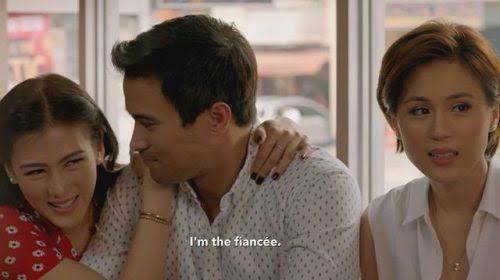
Mary marry me is a romantic comedy film in one of the Metro Manila Film Festival 2018 2018 directed by RC Delos Reyes that Reyes puts up the tandem of Gonzaga sisters in a feel-good family film. The movie brings a lot of fun, love, and sisterly rivalry—bound to touch the hearts of families. The film brings real-life sisters Toni and Alex Gonzaga in their first movie together. Romantic comedy film is a movie that deals with love focusing on a lighthearted and in a humorous ways on the development of a romantic relationship.
The movie entitled ‘Mary, Marry Me’ is all about family and sisterhood. It tells the story of Mary Jane (Toni Gonzaga), and her younger sister Mary Anne (Alex) who is set to marry the former’s ex-boyfriend of Mary Jane, Pete (Sam Milby). Despite the initial unwillingness, Mary Jane’s commitment to make up to her sister has enabled her to set aside her discomfort with her ex-boyfriend as she agrees to plan their wedding. With all set for the wedding, Mary Jane has to face everything in spite of her own hesitations, while facing her own issues with her sister.
The movie really showed how Alex and Toni is somehow some scene are based on real life. Their dialogue is like an actual dialogue. It shows how they treat each other. The way they talk and their activities are the same in real life. Sam Milby completes the movie. It was nice when putting Sam Milby because it adds some kilig moments. Sam Milby and Toni Gonzaga brings the chemistry of their past loveteam.
In the movie Mary Marry Me, there are also elements that are displeasing just like its cinematography. Some scene has a bad cinematography. Some scene are not suitable for young adults. Some of their actions are not suitable for young viewers because it can destroy the innocent mind of the viewers. There are also scenes and dialogue that are not realistic.
Despite its displeasing elements it also has its appealing factors. Some of the elements of a romantic comedy film is present in the movie. Some of these are the happy ending factor. All the characters in the movie has a happy ending. The movie creates an unforgettable, relatable, likable character. It gives an all-around to supplement laughter to the audience. Most of all it has a life lesson to be apply after watching the movie. The movie is not just about the laughs, it is also filled with lesson about family, love, and forgiveness. You will leave the movie theater filled with realizations that at the end of the day, a family’s love can withstand everything.
The overall feel of the movie is pleasing to the senses. Its engaging mix of humor and drama makes it easy to take while concentrating on the values of family. It is emotionally heartfelt through and through. It touches the heart of the Filipino family and it would make you fall in love with yours more. Romantic movies are a result of the writer's imagination that brings out the creativity and beautiful memories that we can keep and we will keep on believing in the power of love, truth, and trust.
Local movies are very interesting to watch with. We should appreciate more local films to promote and encourage the development of nationality. Also, to give them morale to make even better productions. So, we should support local productions and popularize our country. For every movie, you can be filled with lesson.
I was not born into luxury. As a child, I have been through a lot of hard work because my parents have no permanent job and their pay is sometimes not enough to meet our needs. Sometimes I help them with their work to lessen their stress from work. We are five siblings in particular. All of us are studying and sometimes the money that my parents earned is not enough to sustain our living. Sometimes we even borrow from the neighborhood just for us to have something to eat. We also don't have a permanent home. Sometimes we even relocate place to places until we reached the house of my grandfather, the father of my father. We have suffered a lot when we stayed with our relatives. But as we lived there they treated us differently when our parents left us because they were looking for a living. We are not treated properly just like when they eat delicious food they will not give us they even hiding it from us. We are also the one cleaning their house. That is why we have some hatred towards their family. When our parents know we have moved into my grandma's house, the mother of my mother.
As we moved to my grandmother’s house they don't have wealth but they accept us and treated us fairly. In there we have been able to build a small house that is suitable for the seven of us. That’s where we lived and grow up. But as we grow up there is still time that we are not able to eat properly because we don’t have much money. So, my parents searched for different sidelines to add to our daily income because their earnings are enough for our daily needs. As I grow up and see our status I always keep in mind to study hard to help them and to make them proud despite our situation. I always thought that someday we will rise from our current situation. When I reached grade 3, my two older siblings both went to college together and thankfully we are blessed because my father was able to go abroad and be able to send some money to provide for our daily needs and education. At that time it is really hard to sustain for our education because they don’t have a permanent job and their salary is not that enough and all of us are studying, my two older sibling will enter college and the other will proceed in high school and I am still in elementary that is why we are so blessed that my father were given an opportunity to work in abroad. But his life there was not easy because he had an accident there and he was not able to send some money, so we also worked hard here. Thankfully, we were again blessed for the hailing of my father and because we were able to buy some land that we can invest on.
But living a luxury life did not last. Like other families, we also have a fight that leads to physical fight and sometimes some of them run away from home. When my father came got from abroad, our savings were depleted because we thought my two older sibling can be able to graduate in college but because of some mistake in school work they cannot be able to graduate on time and the remaining three of us are still studying so we are forced to sell our house and land which is built to an easy access area and moved to our land not far from the placed we used to live in. In there my mother was the one who supported our family because my father cannot go back abroad because they had finished their work there and he could not be accepted in any more work here because of his age.
When there are problem at the work of my mother they decided to sell some fish and because we don’t have much money we borrow some money for my generous uncle to start a business and thankfully they lend us. Thank God many buy some fish on us and we can bring home enough money to sustain our daily needs. Thankfully, we don’t have to worry about money, food and a house to live. Sometimes my aunts are jealous of what we have got. It was because of God's mercy that the fish has bring enough money in our family and my two older siblings were able to graduate in college. Because of the hard work and perseverance of my parents and a blessing from God, we have life that we don’t anymore have to worry about money, food, and house unlike of what we used to. To repay to their hard work, I will do good for my study for their hard work will not be wasted.
Poverty is not a barrier to live an average life. Be persistent and work hard to raise yourself and you will not fall into poverty forever. There is no one to be blame that we have live a miserable life and we are poor. It is our decision whether we want to rise from poverty or continue to fall into poverty. It is up to us to decide what to do with our lives. We should not let anyone dictate what we can reach and we should not only go with the flow of life on where it can lead us. As they say “kung may tiyaga may nilaga.” But if you are very hardworking you will have more to gain in life.
https://youtu.be/_EP2nhHLQZ4
0 notes
Text
The Handmaiden - A Review and Airing of Grievances

Ah-ga-ssi (original title)
Dir. Park Chan-wook.
Starring Kim Tae-ri, Kim Min-hee, Ha Jung-woo.
I don’t watch nearly enough Korean cinema. Frankly, I don’t watch enough movies from anywhere outside the US.
But this is only partially my fault. The Handmaiden received a tiny US release of 140 theaters (for comparison, there are nearly 140 theaters in New York City alone). It wasn’t released here for public consumption until January 2017, almost a year after its debut at Cannes, and not on Blu-ray until March. I couldn’t even find the film through piracy.
And that’s not surprising. Korean cinema does not do well here. Spike Lee’s Oldboy remake made about $5 million on a $30 million budget. One of the highest-grossing films in Korean history, Ryoo Seung-wan’s terrific Veteran, played in only a few US theaters and didn’t make waves. I saw it while living in Ann Arbor, and the theater was almost entirely east-Asian students. I only saw it because my Korean then-girlfriend took me, and I like foreign films.
Here’s why I bring all that up: Handmaiden should be a hit. It’s got a con-artist plot every bit as good as Ocean’s 11, a gorgeous period style every bit as good as Anna Karenina, an erotic bent infinitely better than 50 Shades of Grey. Truly there is something in Handmaiden for everybody.
And yet, no American success. Why not?
One cynical explanation might be that we don’t like subtitles. “I’m not going to read a movie,” I’ve heard viewers proudly declare. And The Handmaiden could not exist without subtitles. It slips between Korean and Japanese; to keep them straight, Korean lines were subtitled in white, and Japanese in yellow. The relationships between the characters and their languages are critical to understanding the film, but maybe we don’t have the patience for it.
Another possible cynical explanation: we’re not interested in period pieces set in non-white countries. Whether this is true or not, Hollywood seems to believe it—recall the insultingly Caucasian Exodus: Gods and Kings, or even this year’s Ghost in the Shell (the future counts as a period).
Part of the problem here is just that we don’t have a good understanding of East Asian history. The Handmaiden is set during the 1930’s, during the Japanese occupation of Korea. Its attention to period detail is enrapturing, but we Westerners have no context for it. Is that an impediment to our understanding? I don’t think so. I’m certainly no historian, and my enjoyment of the film was undiminished. But it might be a barrier to entry, its Korean-ness dissuading us from even trying to understand.
I’d say this is symptomatic of America’s cultural pathology: films made in Korea are Korean Movies, films starring black people are Black People Movies, films with same-sex couples are LGBT Movies. But movies with white, straight, cis Americans are just…movies. The Avengers is fit for everyone’s consumption, but I dunno, sighs the suburbanite, I just don’t think Moonlight is for me. Our cultural blindness is part of America’s Jungian Shadow, which we refuse to engage with.
I know I’m supposed to be reviewing The Handmaiden, and I promise I’m getting to it. To do that, I have to confront the expectations around foreign films, the idea that the film will be fundamentally different because the director bills his surname first. But when you strip away the veil, either of exoticism or of xenophobia, The Handmaiden is a tremendous film that would be perfectly at home in an American theater, filling the same niche as Black Swan or The Girl With The Dragon Tattoo (another film that needed to be Westernized before we could see it).
At the center of The Handmaiden are three characters: Sook-hee (Kim Tae-ri), the daughter of a legendary thief, “Count” Fujiwara (Ha Jung-woo), a slimy-slick con man, and the Lady Hideko (Kim Min-hee), an heiress kept under tight control by her uncle Kouzuki (Jo Jin-woong, who is 39 in real life but here plays a 60-something pervert).
Fujiwara recruits Sook-hee to help him con Lady Hideko into marrying him, at which point he would take her money and have her committed to a mental institution. But, like secrets, a con can only be kept by two people if one of them is dead. Carefully-laid plans to awry when Sook-hee and Lady Hideko begin to fall in love—incredibly erotic love, not the innocent, non-threatening lesbian schoolgirl romance we’re so often spoonfed.
It’s difficult to say much more without spoiling something. I can’t speak to how well it holds up on subsequent viewings, but the first time through, the unfolding of the intricate plot is marvelous. It engages in a few dirty tricks, including my biggest pet peeve, the artificial withholding of information, but by and large the twists in the story fall in just the right place: surprising but believable, invisible in the moment but obvious in hindsight.
The con is also a perfect thematic vehicle for a film where every character is pretending to be someone they’re not—even the non-schemers. Uncle Kouzuki is essentially a Korean turncoat, adopting the customs of the occupying Japanese as his own, rejecting the trappings of his country as “ugly.” His head servant, Miss Sasaki (Kim Hae-suk), acts the role of the stern house manager; in fact, she is Kouzuki’s ex-wife, who he left to marry a Japanese woman. Despite the divorce, the two still share a bed.
And, of course, our trio of main characters are almost entirely façade. But punctuating their deception are moments of emotional honesty, almost entirely manifesting (or maybe triggered by) the constant lurid tension between the characters. In a spectacular early scene, Lady Hideko, nude in a bath, complains of a jagged tooth. Sook-hee retrieves a thimble and inserts it into Hideko’s mouth, filing down the rough edge. The two stare into each other’s eyes as if entranced, both aware of the sexual nature of the act, both engaging in it slightly too long for plausible deniability.
The characters variously embrace or excuse their transgressive behaviors. Kouzuki seems the most at peace with himself, at least privately. “I’m just an old man who likes dirty stories,” he tells Count Fujiwara. Fujiwara, by contrast, insists throughout the film he’s only after money, but we discover otherwise when he gets rough with a sexual partner whose consent is at best questionable.
So each character lies to each other, and many lie to themselves. The film, both visually and structurally, explores these false fronts, asking which parts of our actions are “real.” The Handmaiden, for all its eroticism and melodrama, confronts some of the more difficult aspects of interpersonal relationships. Can we really know the people in our lives? Can we really know ourselves?
Does any of this sound “foreign”? If this film were made in the US, starring white people, it’d get about a dozen Oscar nominations. Though set in a different time and place, The Handmaiden is a demonstration that people are people, with all our psychosexual baggage, wherever you go. It’s a visually masterful, superbly constructed film deserving of our attention.
9/10.
92 notes
·
View notes
Text
8 Smart Ways to Grow Your Email List with Instagram Marketing

Instagram marketing isn’t just for gaining more followers, boosting ecommerce sales, and getting traffic to your website.
It can also help you to grow your email list, which is a powerful tool for your business’s goals.
Email marketing is still effective to this day. Take a look at the numbers for yourself:
Email marketing is said to provide a $44 return for every $1 spent. Email is 40 times more effective at acquiring new customers than Facebook or Twitter.
Bloggers who earn over $50,000 per year are more than 2x as likely to focus on email marketing technology compared to less-successful bloggers.
Sounds good, right? But how does email marketing fit in with Instagram - a site for endless scrolling and selfies?
Instagram’s one billion active users are looking to connect. 80% follow at least one business, and over 200 million people visit a business profile every day, making Instagram a great way to foster a relationship with customers.
Followers who already know, like, and trust you because of your Instagram presence will be more willing to provide their emails.
Factoring in the power of email marketing, you have a perfect formula for increasing sales.
Here are 8 smart ways to grow your email list with Instagram marketing.
1. Provide Customer Support via Email
Most users prefer to communicate with brands in-app with the help of comments and direct messages (DMs), but there are still some actionable ways you can encourage followers to send an email.
90% of social media users use social media to communicate with brands. Not only do they use platforms to discover products, but they also frequently want to get customer support and answers to questions.
When you use Instagram for business, it’s important to set up an Instagram business profile and add your email address as a contact option to let followers send you requests directly.
For brands, this is an opportunity to start up a conversation without annoying followers. Plus, you can always invite followers to send an email to connect with them personally or offer further assistance.
Here’s how ASOS encourages followers who need customer service to send an email:

2.Promote Your Newsletter on Instagram
Instagram posts do have a character limit, so it might be difficult for companies to cram all that info in one caption.
Luckily, most users know that, and they are open to clicking on the link in your bio and signing up for your newsletter to get more information about a brand they love to follow.
So when followers click on your link they can automatically sign up for your newsletter!
Check out how Forbes did it:

The best part? When Instagram followers subscribe to your newsletter, it’s more likely that they are genuinely interested in your brand, its news, updates, and offers.
3. Share Exclusive Discounts and Offers
Who doesn’t love a discount or a special offer from their favorite brand?
In fact, 58.8% of users follow brands on social media to get access to offers and discounts, making discount codes are an effortless way to increase sales and collect emails.
From there, you can send helpful links to gated content offers to encourage them to join your list. Gated content is content hidden behind a virtual barrier. If the content is enticing enough, viewers will provide their email to get access to your content.
If you want to get emails from your Instagram followers, this is how to do it!
Start by writing a clear CTA in your Instagram bio, for example: Skin Laundry lets Instagram followers book free laser and light facials with the link in their bio. Once they click on the link, they’ll be asked to join their email list to get more exclusive offers:

Another example is Passion Planner. They encourage followers to leave their emails with the Instagram post:

Truth be told, it can be difficult to run discount campaigns and huge offers for most small businesses. After all, discounts do cut into profit. Here’s a brief guide to help you to learn how to use incentives to get more fans & followers
4. Invite Followers to Join Loyalty Programs
No matter what your business size is, it’s important to seek out creative ways to retain your existing customers and reach out to new ones.
To help buyers feel valued, having loyalty programs allows you to thank your followers for choosing you over your competitors.
What’s more, loyalty programs hint to potential customers that there are exclusive benefits they can get with your company. You can collect emails from interested buyers when they sign up.
For example, MyChelle Dermaceuticals promotes its loyalty program and offers a 20% discount:

5. Use Stickers in Your Instagram Stories
With over 500 million daily users, Instagram Stories have gained in popularity over the last three years. Today, people spend 2x more time watching this short-lived content than scrolling through posts, as they are afraid of missing out on something important. After all, Instagram Stories disappear after 24 hours!
Instagram Stories packs a ton of tools and stickers to engage with your audience further. For example, you can use question stickers.
Let’s take a look at Hubspot. The company invites followers to ask their social media video editor questions. The next step is to ask interested people to share their emails to get a personal response.

But if you’re not a big brand that collaborates with niche experts, there is another great way to use the question sticker and collect emails - simply ask your followers for them!
6. Use Instagram Swipe Up Feature For Your Landing Page
Once your Instagram account has grown to 10k followers, you can add a clickable link to Instagram Stories, and take users to the target website page. This feature gives businesses of all sizes the opportunity to drive traffic to their website and boost sales.
Nick Dimitriou, the Head of Growth at Moosend, states that clickable Instagram Stories help to collect followers’ emails when done right:
“A great feature that allows you to promote your content on Instagram is the "SWIPE UP" feature in Stories. Through that, people can swipe up and get redirected to a specific page on your website. This action will allow you to promote, for example, a blog post that has a great lead magnet like a free eBook which will be enticing enough for people to enter their email address to get it. And make sure to mention your free eBook or whatever lead magnet you deem appropriate, in the copy of your Instagram Story.”
Here’s a great example of this strategy in action from Bali Body. With a creative image and clear text CTA, the company takes interested followers to the site to fill in a simple form:

To grab your followers’ attention and convince them to share their emails with you, create Instagram Stories with free design tools.
7. Run Сontests
If you’re just starting out, generating leads for your business may take a lot of time and effort. Luckily, running contests is a powerful marketing method for both big and small companies. After all, everybody loves free stuff!
Contests can also help you grow an email list. How? It’s you who decides what participation requirements your followers should follow to enter the contest, so you can easily grow your email list by asking followers users to share their email addresses for a chance to win.
Here’s an example from Ebates:

Need help with your contest or giveaway?
Book a free call to learn how our team of contest experts can help you create high converting contest today.
8. Collaborate with Influencers to Increase Reach
You can spread the word about the contest and increase reach with the help of influencers with an established following.
Instagram influencer marketing is on the rise. Whether you work with celebrities or micro-influencers, there are some great ways to make the most out of your influencer campaign.
Let’s take Seventh Generation, for example. In partnership with a blogger Joy Green, the company entered an already-established community of its target audience to promote its VIP trial:

And if you’re about to run a contest, you can invite niche influencers to become sponsors. As a small business, you can work with nano-influencers. Since they have a smaller but more engaged following, you can get more participants without spending as much money on the promotion as you would with a more established influencer.
Growing Email List with Instagram Marketing - Key Takeaways
The days when Instagram was a simple photo-sharing app are far behind us.
Over the last few years, it has become a powerful marketing tool that helps companies achieve their business goals!
With a variety of in-app features, it’s easier than ever to grow your email list on the platform. Here are the main principles of collecting emails on Instagram:
Give followers a solid reason to join your list: If you want your followers to share their emails with you, share exclusive offers within your community, know your followers’ pain points, and solve them.
Protect customer data: Living in the digital era, data protection should be a top priority. You should never share or sell followers’ email addresses if you want to protect your reputation and build brand trust and loyalty.
Make it easy to sign up for your email list: Make it easier for them to sign up. It’s better to insert a link to your bio, add an email address as a contact option, and include a clear CTA to your posts so your followers can sign up with ease.
Understand your followers and their preferences: While there’s no one-size-fits-all method to collect emails, you should pay attention to social media metrics and track your posts’ performance, to understand what type of posts and CTAs work better for your target audience. This will make it easier to tailor your messaging and get signups.
Never limit yourself on Instagram: Explore brand mentions and relevant hashtags, enter an already-established community of your target audience when working with niche influencers, and run ads to put other Instagrammers on your email list.
Ready to grow your email list with Instagram marketing? Give it a try and tell us what works best for your business!
About the Author

Hugh Beaulac is a guest blogger and content strategist behind MC2 website who also works as a freelance SMM manager to help SMBs grow online. Twitter | Facebook
from RSSMix.com Mix ID 8230801 https://ift.tt/34I6pGn via IFTTT
0 notes
Text
A personal view on the nature of VR and reflections on the Alterities symposium.
The symposium was an excellent first leap into serious critical reflection on the nature of virtual reality and other nominally immersive experiences.
My own impression of these technologies is still guarded even though I have heard people talk about VR as a technology who’s time has come. The persuasive argument that it has reached the tail end of the hype cycle bell curve and that it can be considered a mainstream technology seems premature. The argument goes that it is mature as a technology, that the content emerging for it is now beyond the fairground curiosity stage, that it is tackling serious issues under the guise of empathy, but I am still not wholly convinced.
I find it hard to accept it for a number of reasons and I have tried to explore these in the following post.
Immersion vs Disconnection
The greatest advocates for VR would say that it immerses the viewer/participant in a world that surpasses existing mediums in its totality of experience. But this immersion to me still feels like a denial of reality, a hubristic arrogance that presumes we can remake reality in ways that are more engaging than the world of tangible objects and beings. During the conference the case was made that just by being in 360 degree proximity to a recorded moment of time, for example in a refugee camp, doesn’t immediately generate more empathy with the subject matter than through more conventional methods of character, story and montage. In fact Eleanor Dare incisively skewered this fallacy in her talk that exposed how empathy can be easily be biased from the point of view of the person who the camera embodies. In a VR experience of Hitchcock’s ‘Psycho’ is your empathy biased by embodying Marion or Norman? I suspect that this kind of immersion is a kind of disconnection. It reinforces a view of the world as a series of diversions, as a technological peep show separate from lived reality.
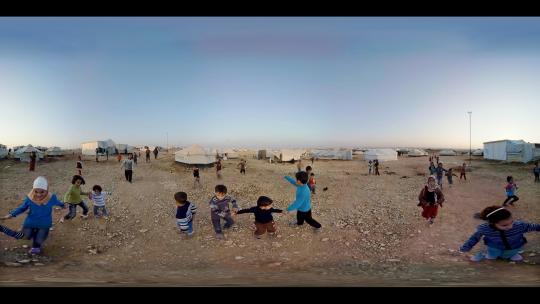
There has long been an argument that lived reality itself is an illusion, a consensual hallucination that allows our consciousness to make sense of our existence. This maybe true, but it is the only measure of our reality and therefore whether you see lived experience as a concrete phenomena or an illusion generated for someone else’s amusement, the distinction rapidly becomes moot during your everyday interaction with the world because you have to except a certain set of experiential rules or you would literally be paralysed by philosophical feedback loops - ‘What’s the point of existence if it’s all an illusion?’ and other existential dead-ends. If VR is just an illusion inside an illusion then you could be justified in seeing the act of donning goggles not as disconnection but just another layer of the hallucinogenic onion skin. However I veer to the opposite conclusion that if it is all virtual then we don’t need goggles to experience deeper levels. Our perception of other realities is already available to us via other means.
The Corporate Platform
The reason for VR’s third dawn in 2015 was largely due to cost and reach, far more than a technological apex or a cultural coming of age. Two things came together in this moment. Tech firms Facebook and Google had bought VR tech companies in 2010 and 2011 respectively and were keen to get their products out to their global user base. The realisation that VR content could be produced for a mass market audience through Google cardboard and codecs developed to deliver the content on Youtube meant that barriers to entry were reduced. Facebook also saw that its recent purchase Occulus Rift could give them traction in the games market, especially if they could promote it through their core platform.
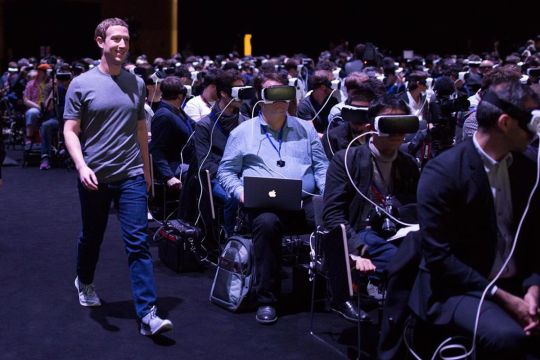
Both companies saw that the possibility of VR and AR lies less with experience of immersive worlds and the associated imaginative possibilities, but rather, as a means to monopolise the attention economy.
As was brilliantly outlined in the keynote by Mandy Rose, Director, Digital Cultures Research Centre UWE Bristol the threats posed by immersive technologies are real, eye tracking and focus measuring means the deployment of machine learning to the task of plotting our attention directly through our eyeballs. Big tech is no longer happy with the phone in your hand they want it strapped to your face. This is the true motivation for VR’s third attempt at the big time.
A part of me longs to leapfrog this inconvenient truth about the intention of the platform and deep dive into the relative aesthetic and social power of the media, but the two aspects are wedded to each other like two lenses in a stereoscopic view finder. This is not how it has to be, but at least in the current environment of surveillance capitalism this has to be accepted as an operating norm. Every creation essentially has the shadow of big tech hanging over it. This seems to be an issue more specific to VR than any other media delivery method. Film, television and computer games are all to a greater or lesser degree influenced and developed by corporate investment and control however each of the above examples can be created and experienced without adherence to one specific platform or technology, where as VR seems to be exclusively experienced within a walled garden provided by Silicon valleys biggest monopolies, where tracking technology is implicit in the mix.
The headset is no longer a high resolution specialised technology, it has become a face housing for the ubiquitous spy in our pocket. The irony is that one of big tech’s biggest critics Jaron Lanier who has argued persuasively that the reach and intrusion of social media and big data into our lives, famous for outlining in his book of the same name ‘You are not an App’, was one of the early exponents and developers of VR.

Facial Architecture
VR has always had a strong link with early nineties cyber paganism and a new age optimism. Returning to Jaron Lanier, he was the epitomy of this kind of technological shamanism, initially espousing a humanist view of VR technology as a benign saviour and mind expanding aid. In the early nineties it was seen as a new frontier of psychedelic imagining beyond the strict conventions of mainstream office bound computing, a techno flavoured post modern red pill. Inside these worlds the libertarian fantasy of unbounded opportunity would allow acolytes to free themselves from the limiting factors of location, economics, gender, sexuality or race. The only problem with this was the limits of the technical implementation. Ever since Ivan Sutherland’s ‘Sword of Damocles’ the technology has not really escaped its clumsy shell.
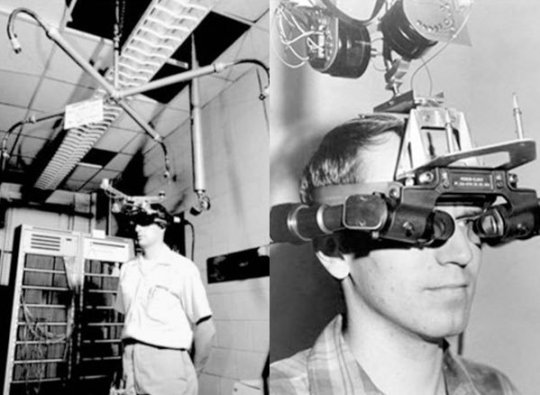
If you search for VR in a search engine you don’t see images for wonderful VR worlds, you see images of eyeless smiling models engaging in some mysterious enervating experience from within a plastic box. This appears little removed from Sutherland’s experiments forty years ago. The problem with body attached technology, especially technology that covers the face is that it looks like the apparatus of a psychology experiment or an optometrist’s clinic. It seems intrusive and unwieldy. Perhaps this is a temporary problem of miniaturisation and successive generations of the technology will see it shrink to the size of an average pair of glasses or even be permanently be implanted in the viewers retina. But as was seen with Google Glasses, miniaturisation brings its own problems, as technologies become more invisible the more we become concerned about their secret intrusive presence in our lives. Are other people voyeuristically and surreptitiously collecting visual mementoes for sexual gratification, state sponsored surveillance or monetary gain.
Does the idea of a technology welded to our eyes cross a fundamental taboo? No one wants to be blindfolded unless rules are clearly agreed at the outset. By consciously blunting our senses are we losing something that is not readily given up.
I think VR also has design problem in the same way that the ‘Umbrella Hat’ does. It is a perfectly reasonable solution to a reasonable problem. VR provides a way to experience a creative world in a total all encompassing visual and auditory form. The umbrella hat likewise allows the user to stay dry and also remain hands free while walking in the rain. However there is something vaguely ridiculous about an umbrella on your head, in the same way that there is something vaguely ridiculous about wearing a black box on your face. This may be personal but I know that many people are put off by this phenomenon. I call it the ‘embarrassment factor’. However this is not necessarily an insurmountable problem and certainly seeming to talk loudly to someone who is not present in the space is now common as a result of mobile phone and this would have been considered highly embarrassing three decades ago.
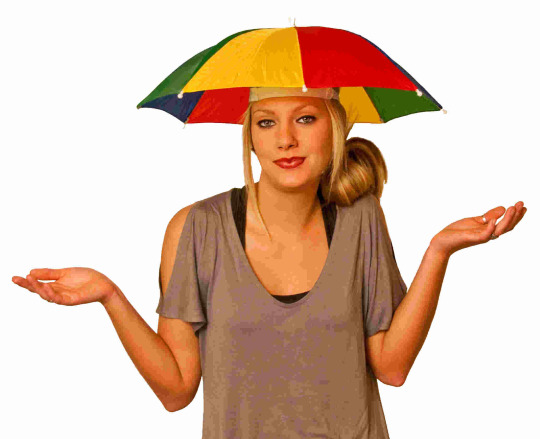
Even if all these things are true and it will always only have limited audience, Does it matter If VR is always a niche pursuit enjoyed only by those for whom it provides pleasure, probably not and as long as it can cross boundaries perhaps it is useful.
0 notes
Photo

#TwinPeaks: The Return Takes on Peak TV — and Wins
Sonia Saraiya TV Critic
SPOILER ALERT: Do not read if you have not watched “Part 9,” the July 9 episode of “Twin Peaks: The Return.”
To get metatextual for a minute, possibly the most quintessential phrase of modern television writing is in the above sentence: “spoiler alert,” that phrase which warns an interested reader that they might not want to know what lies ahead. It’s a helpful warning, of course, because surprise is such a potent emotion, and especially unique to a serialized medium like television, where you could be just one week behind a beloved story. But the phrase is perversely irritating, too: The implication is that all that matters about a piece of writing is whether or not it engages with plot details — and that merely stating the basics of plot is enough to ruin it, when so much of storytelling is not about what’s being concluded but how it’s being concluded.
There are a lot of things about “Twin Peaks: The Return” that challenge present norms of television, and some are a lot bigger than the phrase “spoiler alert.” But a satisfying thing about the Showtime revival of the 1990 series is that it feels un-spoilable. There are some clues, of course. You can let slip that a certain cast member is in an episode, or that an unexpected celebrity cameo occurs. You can attempt to explain the status of the mystery. You can even try to describe, frame by frame, the central images of “Part 8” — and you would convey at least some of what “Twin Peaks: The Return” is up to. But any successful effort to really spoil a viewer would become so involved, and so tedious, that it would eventually become more practical — more efficient! — to just watch the hourlong episode. I am reminded of the comically large maps that pop up in Lewis Carroll and Jorge Luis Borges’ work, which are so successful at modeling the world that they become as huge and cumbersome and unnavigable as the world itself. On Twitter, writers who cover TV have been morbidly joking that David Lynch’s return to the medium strains recapping culture to the breaking point. It certainly proves a challenge.
It’s interesting that starting July 16 (next week), “Twin Peaks: The Return” and “Game of Thrones” will be competing for viewers’ attention at 9 p.m. on Sunday nights. If “Twin Peaks” is completely immune to recapping, “Game of Thrones” — with its wide-ranging source material, online databases of character names, and sudden deaths — is eminently recappable. Both shows are beautiful in their own ways, but “Game of Thrones” tends to be a show where the audience sees things happen, while “Twin Peaks” tends to be a show where the audience is made to keenly feel the uncanny — so keenly, that it is unsettling, horrifying, and often even comical. (Maybe the humor of “Twin Peaks: The Return” is really the key to its essential ephemerality. It’s hard to recap a joke; you kinda had to be there.) Sunday night’s episode marks the halfway point of the 18-episode season, but it’s hard to say what has happened in the first several episodes of “Twin Peaks: The Return.”
Indeed, when the show tries to explain itself to itself, it turns into incredulous sarcasm. Last night in “Part 9,” Albert (Miguel Ferrer) heard the plot of just a sliver of “Twin Peaks: The Return” — the sliver taking place in Buckhorn, S.D. — and deadpanned, “What happens in Season 2?” As far as we know — for now! — this particular limited series won’t get a Season 2. But Albert’s joking is one of the more metatextual moments of “Twin Peaks” — a singular phenomenon, both in 1990 and in 2017, because of how auteur David Lynch puts avant-garde filmmaking through the paces of contemporary television. In 1990, “Twin Peaks” was an otherworldly window in a TV schedule that otherwise fielded “Wings,” “Full House,” and “Who’s the Boss?” — a moment before TV’s redefinition, expansion, and explosion.
In 2017, TV means something very different. There are exponentially more scripted shows than ever before and each is fighting for an ever smaller share of the audience. Albert’s skepticism is both an investigator commenting on a melodramatic chain of events — and that of a TV executive questioning uneconomical storytelling. “Twin Peaks: The Return” positions its plotline as a pitch — knowing, even as it does, that the outcome isn’t what the industry looks for. “Twin Peaks: The Return” is slow, bloated, full of exposition, violent, and opaque — the same criticisms lobbed against “True Detective’s” Season 2, for example — and yet it makes an unlikely but arresting case for these disruptions. It’s hard to pinpoint exactly why; part of Lynch’s genius is that he can get away with what other creators can’t. But these inversions of episodic television as it is typically practiced are what make up the substance of “Twin Peaks: The Return,” a series that could only exist because of Peak TV and at the same time completely defies it. The multitudes of television in Peak TV creates anxious movement, because networks are desperate to create buzz in a crowded environment. David Lynch could care less about buzz — perhaps he just knows he already has plenty of buzz to work with — and as a result “Twin Peaks,” already a slow universe, seems even more absurdly plodding in “The Return.” “Part 7” indulged in an 184-second long scene of a man sweeping the roadhouse floor, and more broadly, the audience has been watching no one realize that there’s something seriously wrong with Dougie Jones (Kyle MacLachlan) for hours now.
“Part 8,” so far, is the pinnacle of “Twin Peaks: The Return’s” refusal to be either summarized or sped up. It unfolds with slow, radiant grace, using an atomic bomb test in 1945 as the starting point for a moral history of “Twin Peaks.” It’s both incomprehensible and obvious — a surreal sequence of scenes, leading towards one very strange but very unequivocal moment in which a creature crawls into a girl’s mouth. “Maybe I’ve been too immersed in all things Lynch over the past several months,” said New York Times recapper Noel Murray, “but I didn’t think that any of the above was as opaque as it seemed.” If television typically uses the constraints of quick production and cheaper budgets to tell workmanlike stories with complex implications — consider how much there is to ponder and unpack in the average episode of a multi-camera sitcom — David Lynch’s television uses ultra-high production values to tell extremely abstract stories with what turns out to be very simple implications. In “Part 8,” it’s that the universe is governed by forces good and evil. And to paraphrase Murray, that subconscious, extra-planar war, and how humans engage in it, is the fundamental spine of the “Twin Peaks” universe. Perhaps we let Lynch get away with more than other creators because we are confident that he will deliver something extraordinary on the other side of it. Or perhaps we sense that Lynch believes so fervently in what he’s communicating that it goes beyond fiction for him, toward some articulation of the moral order of the world. That sincerity — and its utopian wholesomeness — is also at odds with the subtlety and grit of prestige dramas. And yet it’s also, confusingly, captivating.
Maybe all of “Twin Peaks: The Return’s” charms can be summed up in the totally unnecessary but ever-so-pretty concert scenes, in which high-profile and/or bleeding-edge-of-cool bands play at the town Roadhouse. How Nine Inch Nails ended up performing a highly produced concert in a town with a population of 51,201 is beyond the average person’s intellect or reason. But there is probably no greater example of mutually agreed-on upon value of the ephemeral than live concerts, which offer a chance for intimacy and experience with a creator’s work that can’t be reproduced in a recording. But so many concerts struggle to provide that experience — there are so many barriers between you and the music, whether that is the hurdle of a hundred-dollar ticket, the traffic jam on the way to the parking lot, the mediocre opening act, or the irritatingly tall person standing in front of you. The Roadhouse’s concerts are the fantastical ideal of concerts — tiny, intimate, effortlessly cool, booked by someone who has exactly your taste in music (electronic pop numbers about death, apparently). “Twin Peaks: The Return” positions these concerts as moments of total, blissful immersion into art — no livetweeting, no second-screen Candy Crush, no frantically googling who Evil Cooper’s companion of the week is. I don’t know if it’s always working. But it’s a brilliant goal to have.
link (TP)
4 notes
·
View notes
Text
We may just have a decoder ring for TFP
Okay. I'm writing this meta sitting on a plane having seen TFP exactly once (in English) and having done a quick Wikipedia refresher on The Importance of Being Earnest after not having read it for 10 years. I'm also typing this on my phone so don't expect formatting. We need to add the out of the blue conversation about Oscar Wilde into the pile of "something fucky" about this series. If you can, try to put aside your rage about invoking Oscar's ghost in this atrocity of an episode and bear with me. And if you're not in a place to entertain tin foil hat conspiracies, that is absolutely okay. Premise: My faith in Mark Gatiss is at about zero right now, but I'm still reluctant to believe that Mark would not only draw our attention to this play, by this man, in a show steeped in 1895, when there was absolutely no plot relevant reason to do so other than to get up the hopes of queer viewers and then brutally dash them. WHY, then. Why any of this. It could be brutally unnecessary queerbaiting. Or, alternatively: it could be something fucky. (If I'm wrong, then I'll be the first in line to drag him, btw.) If you're not familiar: Wilde was a famous queer dramatist in Victorian London, he was a contemporary and friend of ACD, he wrote awesome queer literature that was too obvious and he was arrested and imprisoned for it (in 1895) which caused his early death. Being Earnest, in particular, is famous for being one of the most blatantly, obviously queer coded works of the Victorian era. It's in part what got him arrested in the first place. I mean. There's a character named "bunbury" (just wait for it), and the phrase "Earnest" was itself a code word among the Victorian gay community used to identify one another. Now. Here's where the fucky part begins. Being Earnest was written in 1895, the same year Wilde was arrested for aggravated gayness. Drawing attention to this play in particular is now drawing another 1895 parallel in actual BBC Sherlock canon, for better or for worse. So we're to believe that for no reason whatsoever, when Sherlock and Mycroft are saying their goodbyes to each other thanks to that idiotic "patience grenade", that Sherlock finds it necessary to remind Mycroft that he played Lady Bracknell in Being Earnest and that he did a good job of it. Well that's weird. Until we look up the character synopsis of Lady Bracknell: "the perfect symbol of Victorian earnestness - the belief that style is more important than substance and that social and class barriers are to be enforced." SOMETHING'S FUCKY, SOMETHING'S MAJORLY FUCKY. This is a perfect summation of Mycroft's role in TAB. the perfect image of the establishment. The enemy that must be defeated. It's also the perfect description of this episode: style over substance, and that social and class barriers (heteronormativity) are to be enforced. Just for funsies, let's look up the character synopses for the two main characters of Being Earnest: John (Jack) Worthing: A young, eligible bachelor about town. His family pedigree is a mystery, but his seriousness and sincerity are evident. He proposes to the honorable Gwendolyn Fairfax, and despite leading a double life, eventually displays his conformity to the Victorian moral and cultural standards. (Holy shit, it's John.) Algernon Moncreiff: A languid poser of the leisure class, bored by conventions and looking for excitement. Algernon, unlike Jack, is not serious and generally out for his own gratification. Lady Bracknell is Algernon's aunt. (Holy shit, it's Sherlock, down to the funny name.) And just to round things out, who is Gwendolyn Fairfax, the woman John proposes to? She "believes style is important, not sincerity. She is submissive in public but rebels in private." This would fit with pre-redemption arc Mary. The plot of the play is that both Algernon and Jack lead a secret double life using the assumed name "Ernest". Algernon pretends to have an invalid friend named "bunbury" (ahem) out in the country who he needs to tend to, and uses this as an excuse to avoid social obligations. (This really has shades of sounding like the institutionalized Euros plot?) Jack, meanwhile, escapes his life of duty and responsibility in the countryside and becomes a libertine named Ernest when he goes to the city. (Oh hi, adventure craving John.) Farcical miscommunications happen, blah blah, the play ends with everyone officially named Ernest and everyone happily engaged to be married. Back to the question, WHY, WHY FOR THE LOVE OF GOD WOULD THEY DO THIS? I think I may have an inkling. Being Earnest is known for two things: being suuuuper gay, and being trivial and farcical to the point that reviewers of the era were hesitant to even give it a shot. The queer coding implications of bringing this in are so obvious it goes without saying, so let's move on to the farce. Reviewer William Archer said that he enjoyed watching it but found it to be empty of meaning. "What can a poor critic do with a play that raises no principle, whether of art or morals, creates its own canons and conventions, and is nothing but an absolutely willful expression of an irrepressibly witty personality?" Others said "it is of nonsense all compact", and "the story is almost too preposterous" (to not be a soap opera). Are these critiques sounding familiar at all??? Long story short: IT'S A LITERAL FARCE. Lastly, let's not forget what quote Mycroft actually brings into it: "the pure and simple truth is rarely pure and never simple." The possible implications of that, I believe, go without saying. I don't want to get too far down into the meta rabbit hole because if I'm wrong it would be a waste of my time. But. SOMETHING IS EXTREMELY FUCKY HERE. If - IF, and I recognize it's a big if - there is a bigger plan here, our question is why do it this way, why bother with all this. I can think of two potentials: 1) If they're highlighting the environment that ACD Sherlock was written in to make a larger point about heteronormative culture, or 2) something went wrong at the BBC level and they're highlighting that we're still culturally stuck in the same era. Can we all just agree that there is a strong possibility this reference was written in for some sort of a purpose? Hopefully? Probably? There are too many parallels here and the signaling in the dialogue to this play was too out of place to just drop Wilde's name for the sake of it? And if they did it just to add to the queer subtext that they're not going to make use of, this is next level queerbaiting to the extent that I genuinely have a hard time believing Gatiss would allow this to happen? I'm hoping against hope? We know how important Wilde is to Mark as a gay man. If there's nothing more, then I'll come back to this topic in the future and pick it apart as free standing queer subtext. This just heightens the stakes of the "brilliance or dumpster fire" quandary we're staring down right now. If it were me writing Sherlock (and obviously it's not, and obviously I don't trust these guys right now): I would say that it would be a nice touch to update Wilde's version of being "Ernest" - having to take on an assumed name and a secret double life and hide your queerness under subtext - to the modern queer standard of just "Being Earnest". As in honest. True to one's self. Ernest to Earnest. It's fucky. It's just so fucky. What the fuck are they up to, guys.
2K notes
·
View notes
Text
Advanced Ways to Use Emoji’s in Social Media Marketing

As you’re interacting with your consumer every day on the different topic among it many of them were actually funny one in that case you can easily use emoji for a better portrayal of emotion.
Previously if you didn’t use emoji then others communication using emojis you may find it difficult like an alien language. Not only that where the people of your industry utilizing to connect with their audience and practice some creative brand building but you’re lagging behind in that case.
In fact, 90% people use emoji and more than 30% people use emojis several times a day according to a research.
Emoji experts and researchers are claims that ‘Emoji’ is the fastest growing form of language in history and right now which is still in evolving process.
Now you may want to know why you should use emojis for social media outreach, here are some useful tips follow it for brand building.
Use Emojis organically
Using emojis you can express emotion in more detail and in exact form, usually, there has no existence of barriers to communication.
Actually, the clarity of messages is so transparent to understand.
If you try to get creative something like the 2015 Chevy goes emoji campaign, then at first set your advertisement strategy give the entire campaign structure following that.
At the beginning of the campaign, people weren’t able to understand the message but a year later again they use the emoji form in a televised ad able to catch the attention of viewers better than other campaigns.
Understand What Emojis Mean
The cute, little emojis have different meanings sometimes may find it difficult to understand, might not mean what you think they mean.
When you do understand the meaning of it then get the creativity on board to give that little one’s an all-new structure and wholesome message.
Constant interaction with Consumer
2016 proved that a movie used comic character and made its success all around the world.
Deadpool’s emoji were simple but able to catch the essence of the comic book character. If you going to get creative with emojis then keep in mind to stays consistent with brand messaging or else fair enough chance to lose some potential consumer of your brand.
Use Emojis for Real-Time Engagement
On social media platform basically in Facebook, Twitter, Snapchat or in live streaming video format use emojis to show the human side of your brand.
always be creative with these but the excessive use of it may cause some negative effect also. Sometimes emojis can be used for engagement by turning them into exciting games like
“Emojiball”
Incorporate Emojis into Your Sales Funnel
Domino’s easy order campaign is one of the few examples of emoji marketing, as they stand against all traditional marketing techniques to succeed with trending one.
All pizza lovers just need to set up Dominos account and link with a twitter account, tweet a pizza emoji, all it takes to get a confirmation message from Dominos and your favorite pizza at a doorstep.
Key Takeaway
Emoji gives the online user a much better exposure than text, as they are a new form of communication use them carefully.
And whether you like them or not, they’re here to stay.
If you want to connect with new generation online user through the social platform in their language then get set ready to be creative with emojis and give new shape and structure in your social marketing campaign.
4 notes
·
View notes